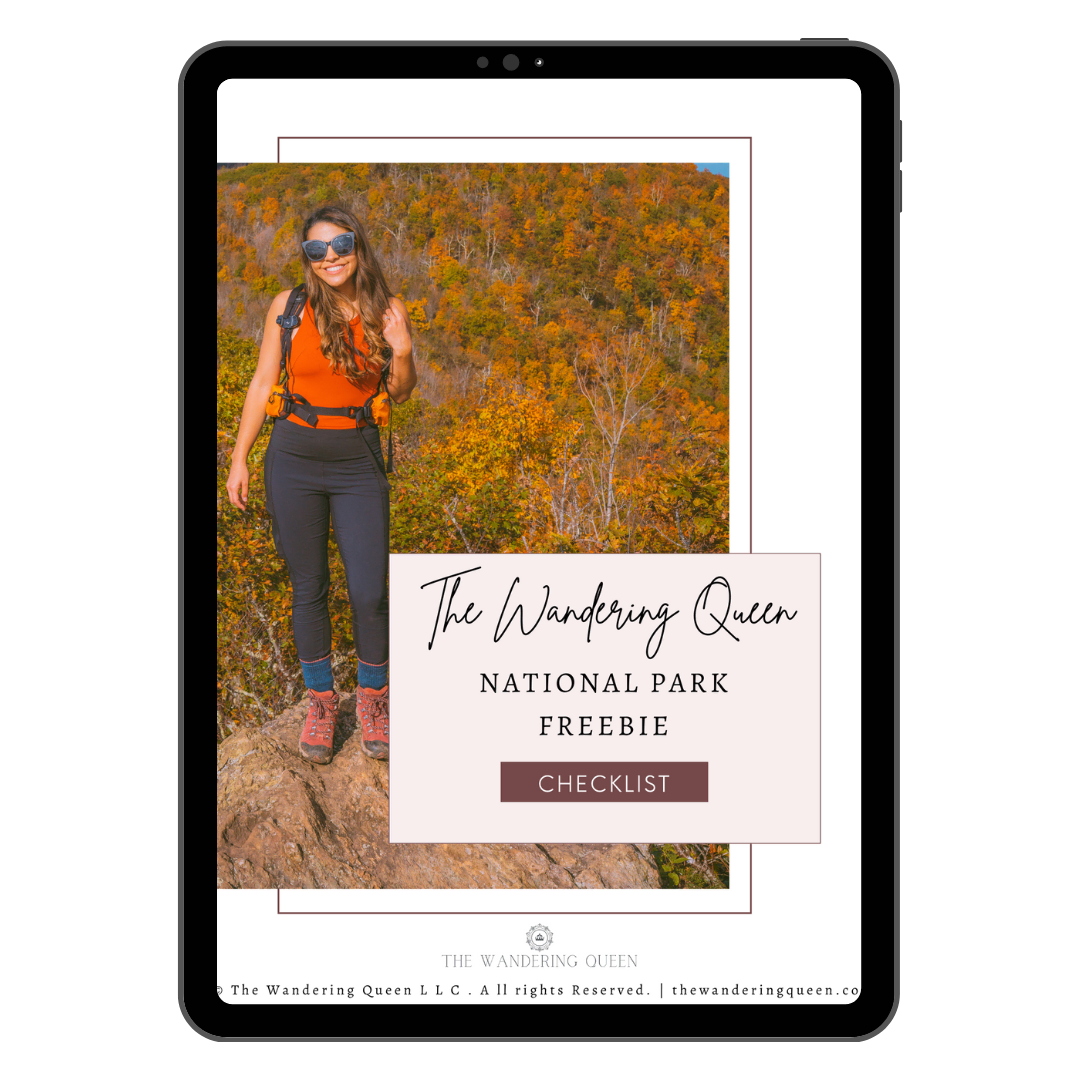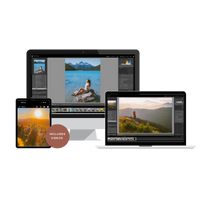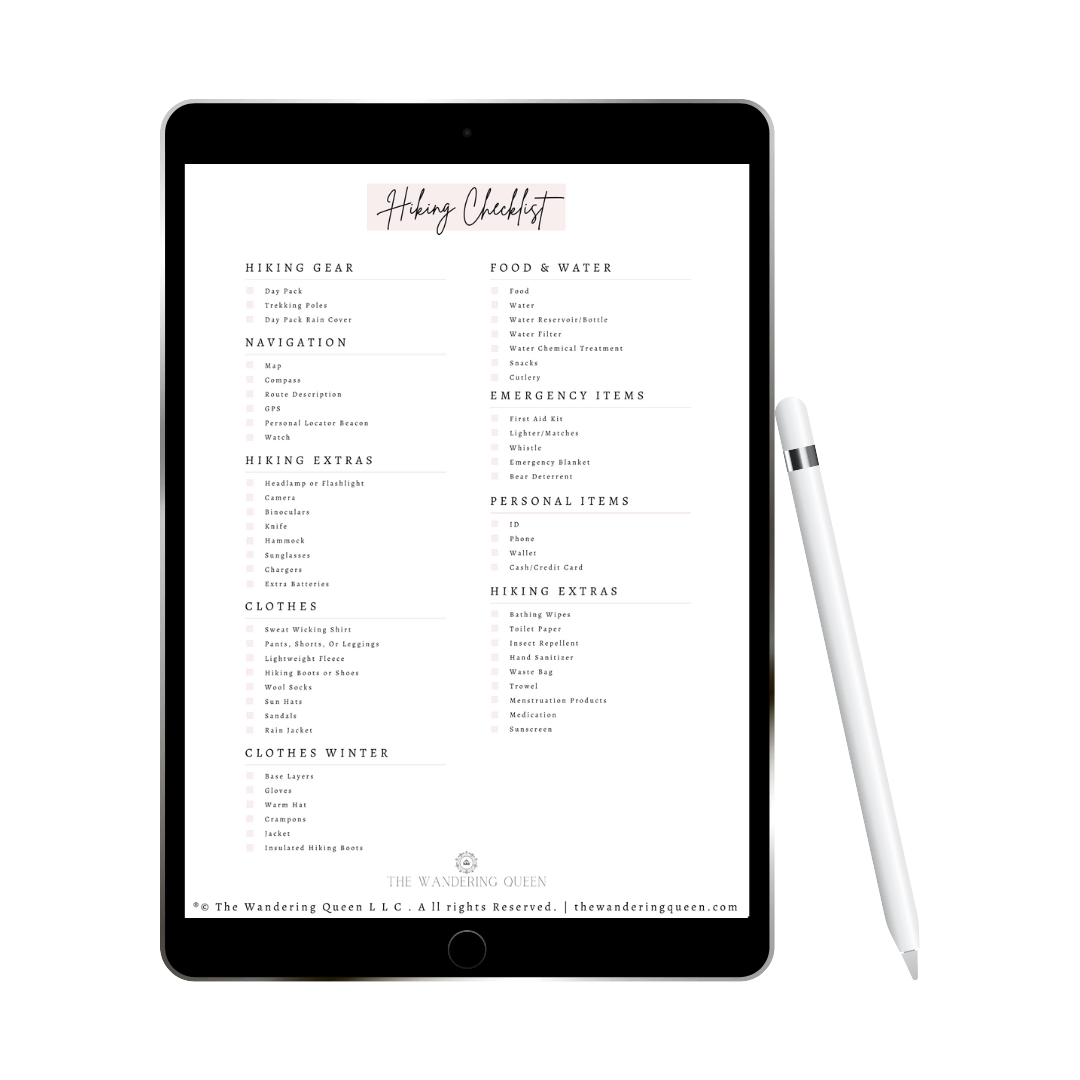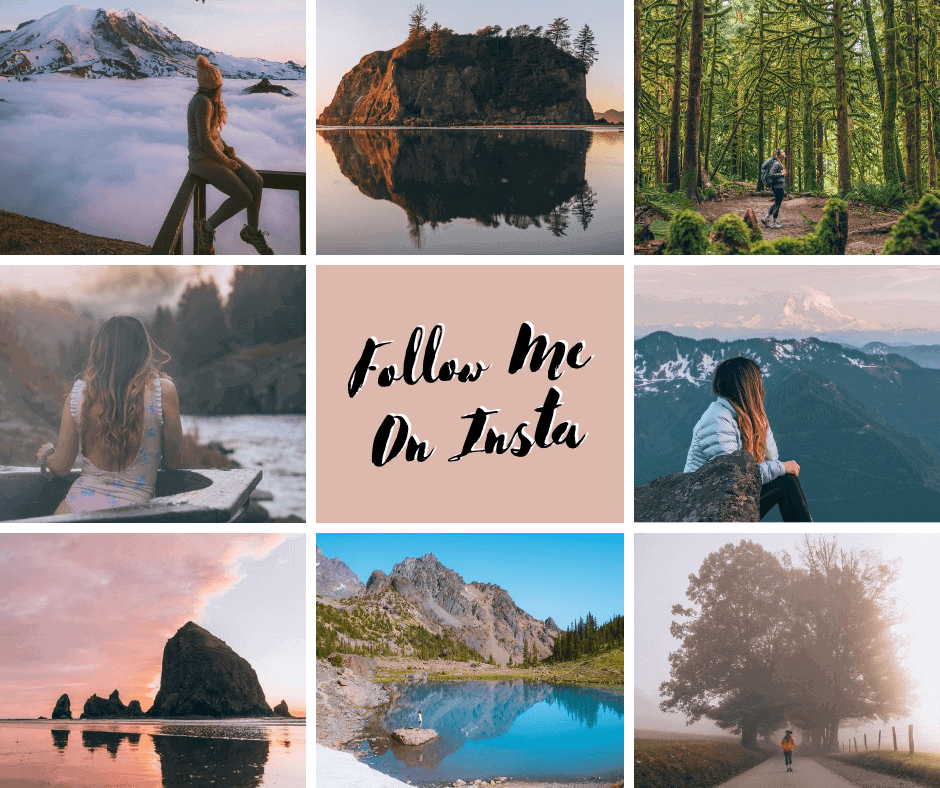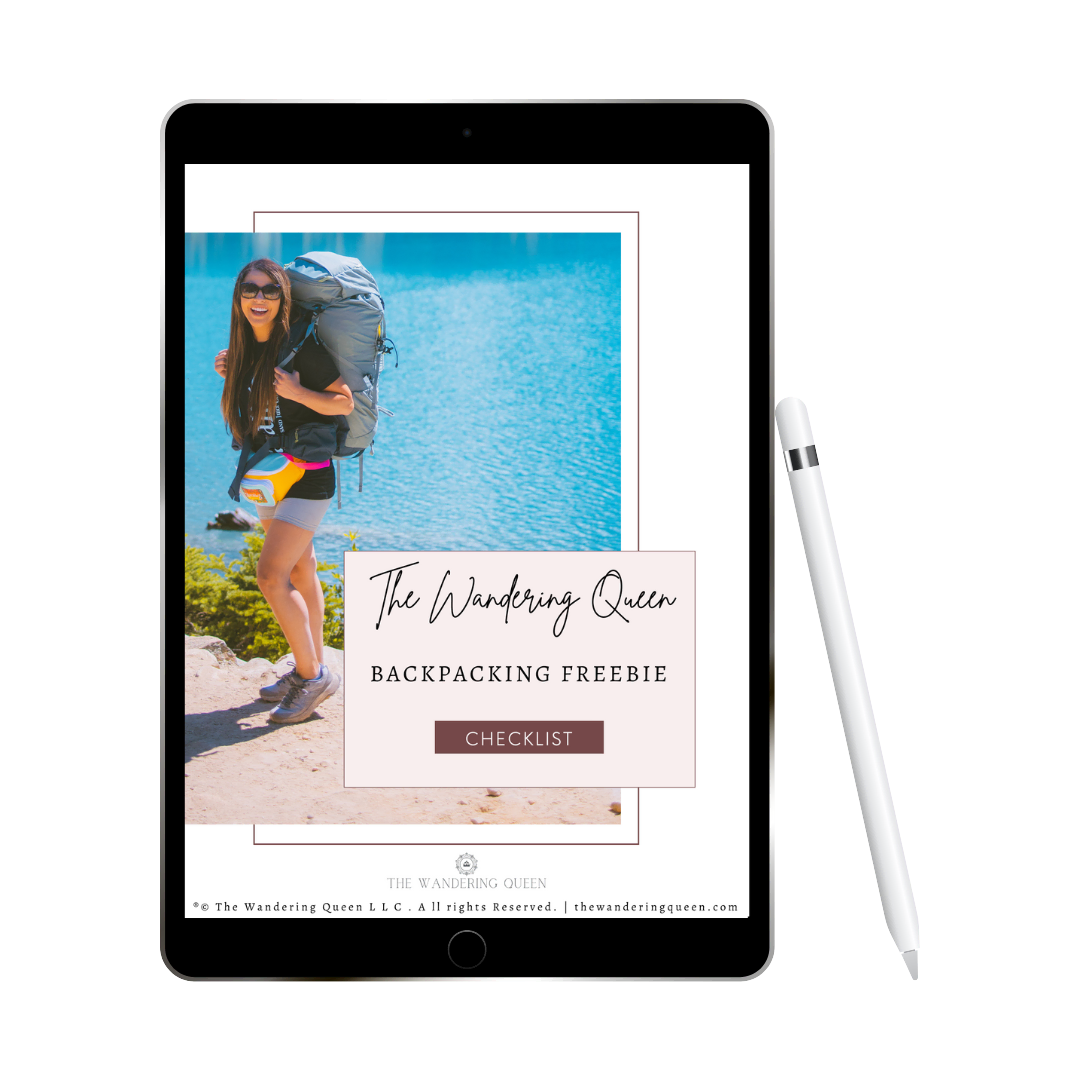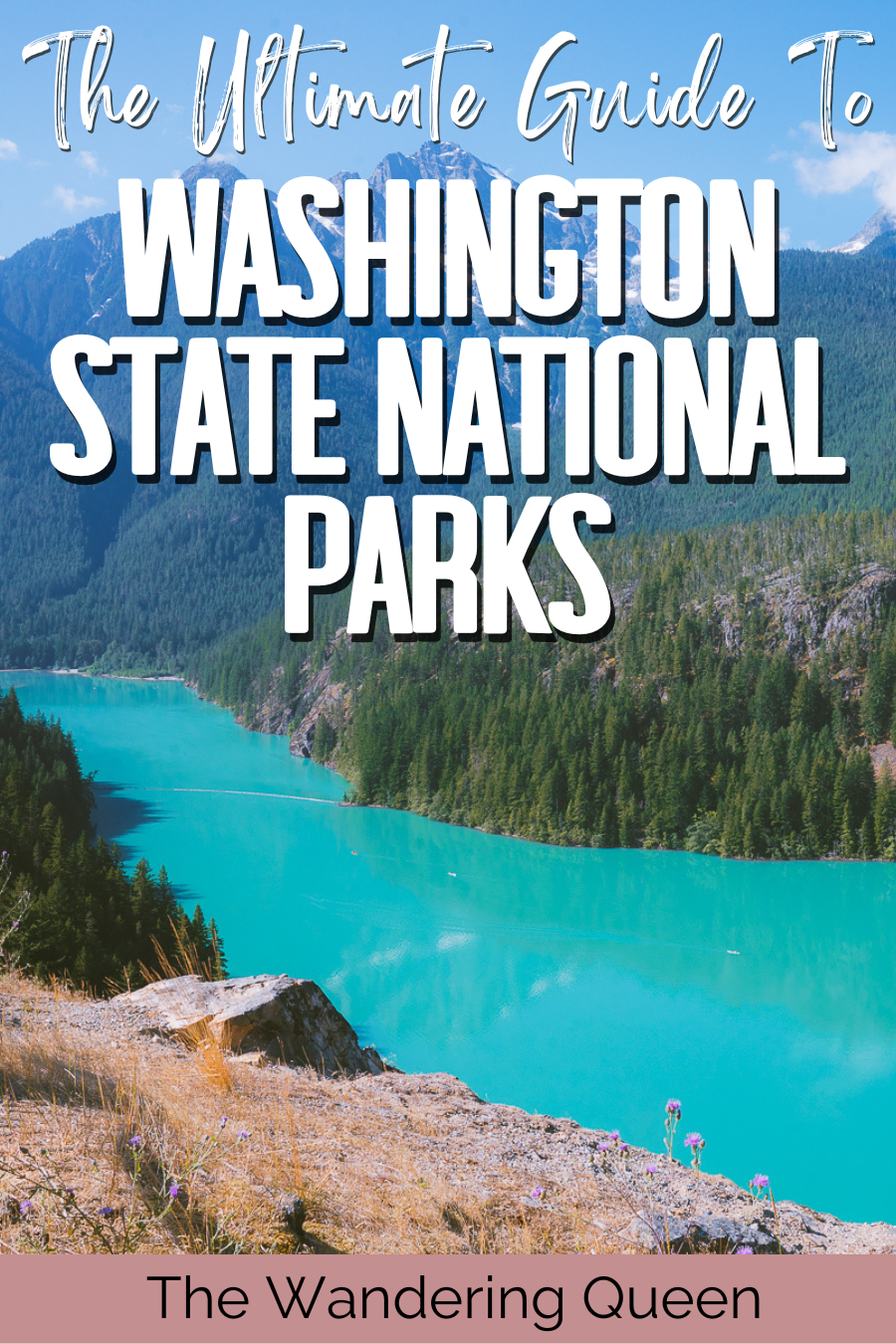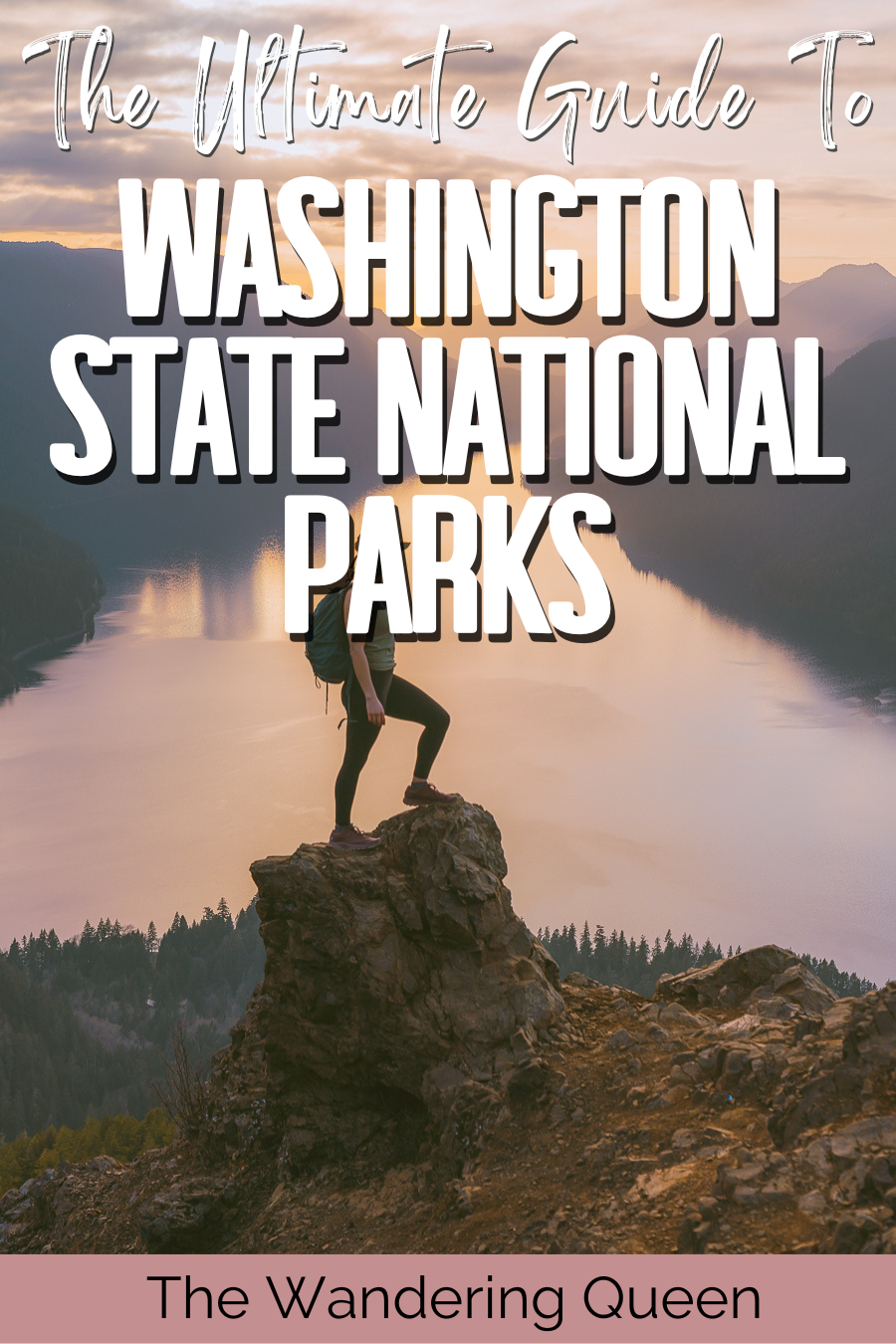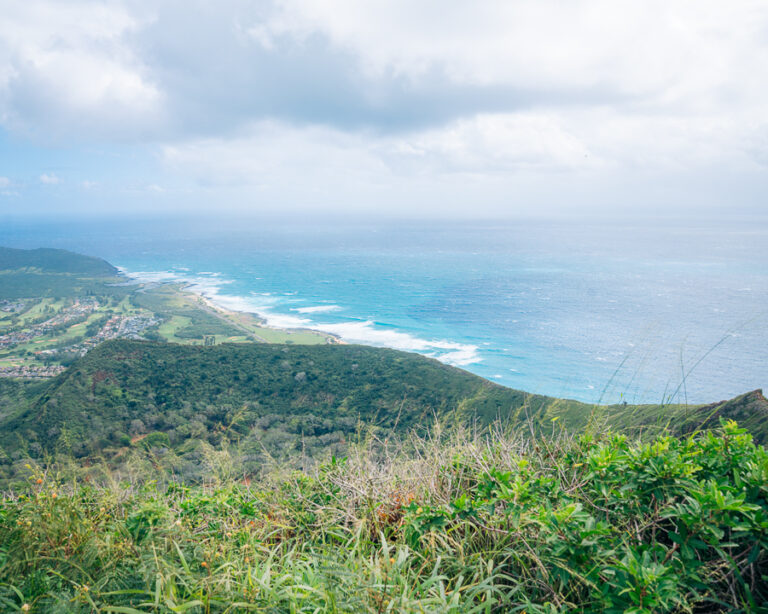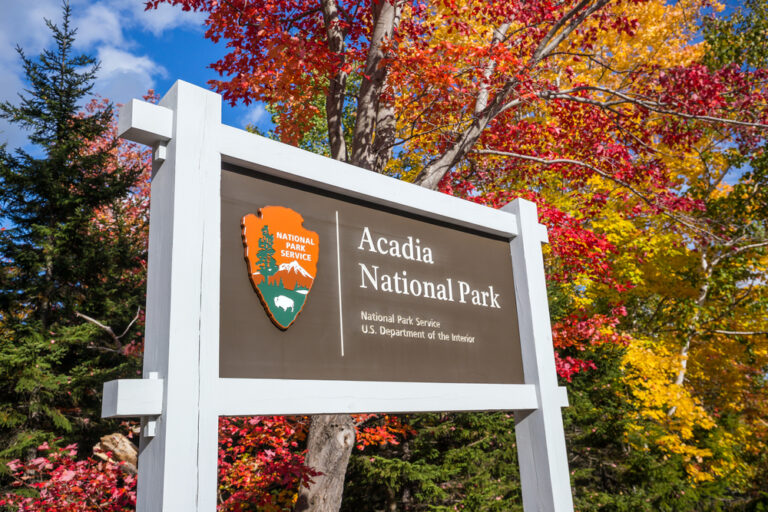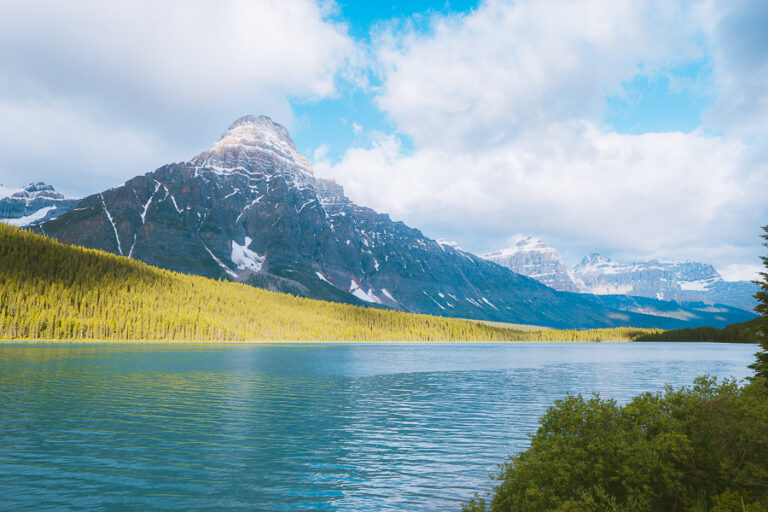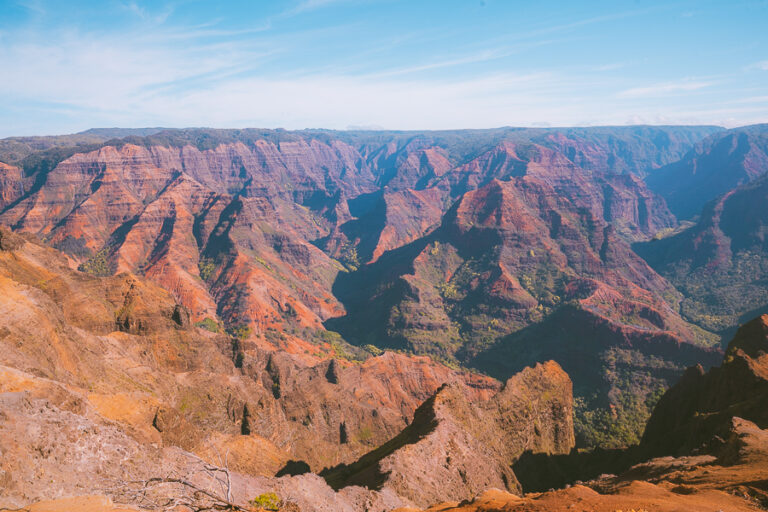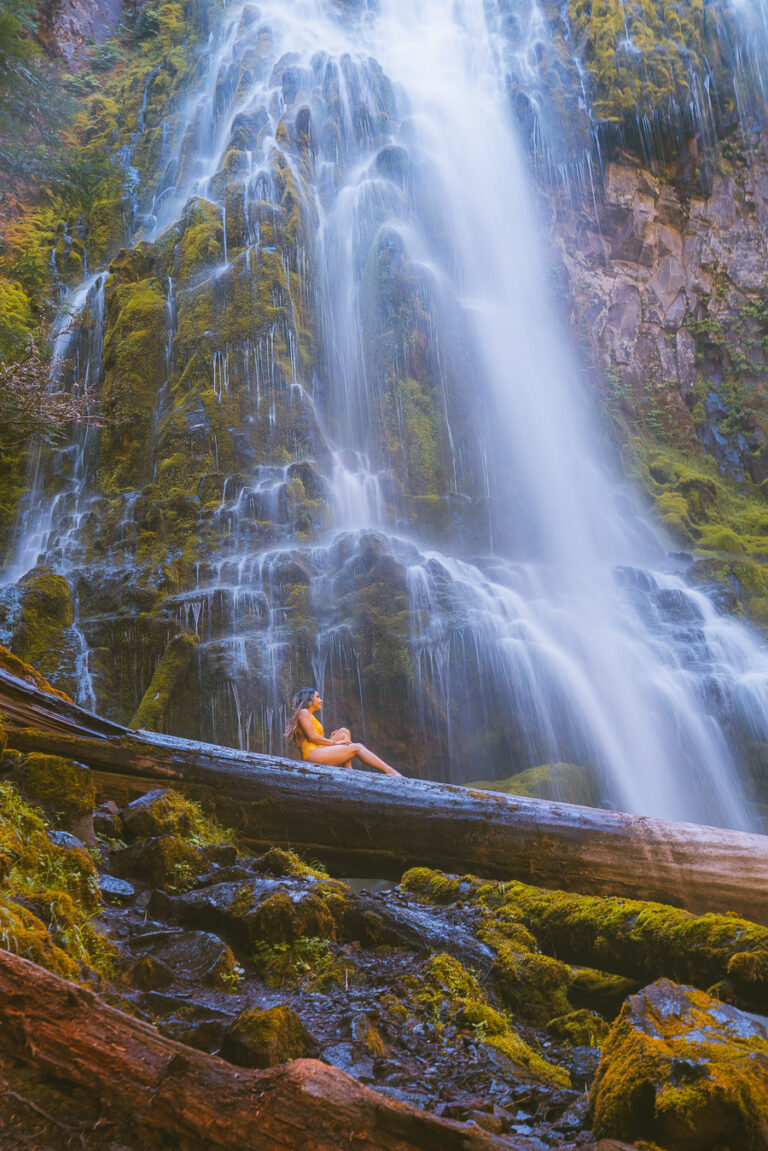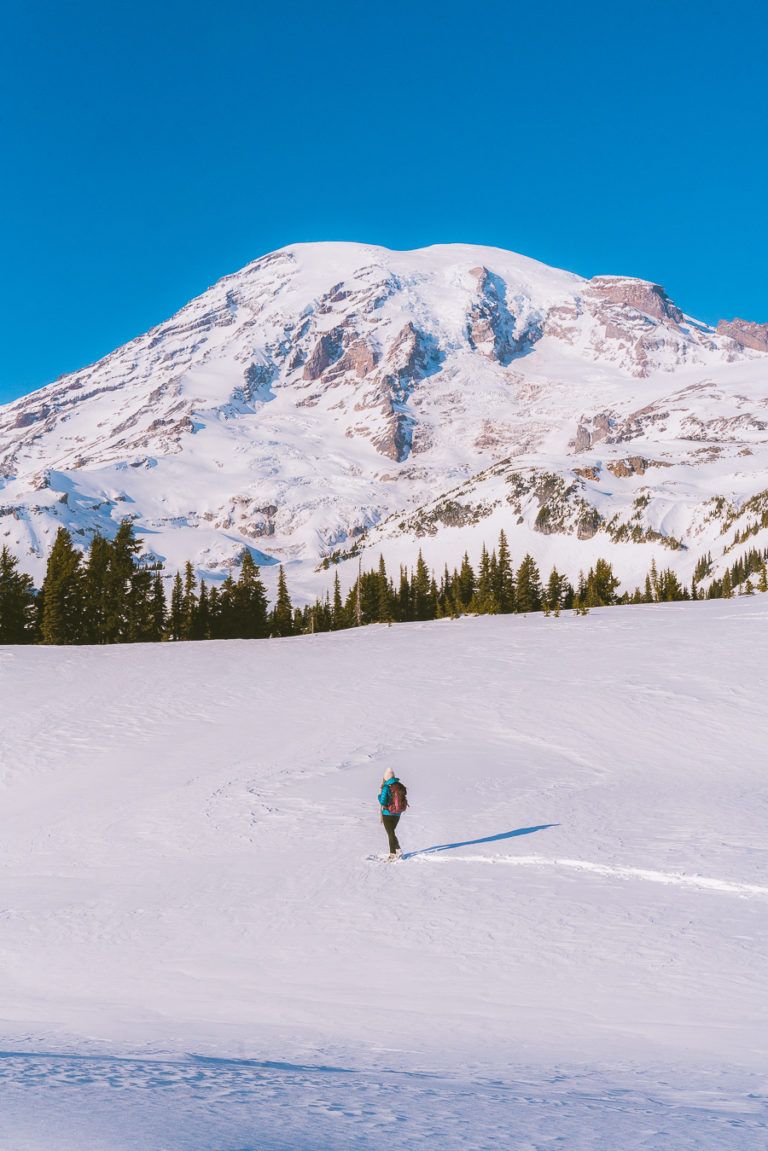An Amazing In-Depth Guide to the National Parks in Washington State
As a proud Washingtonian who loves a good hike, I’ve spent much time exploring the state’s magical outdoors. I’ve visited all three national parks in Washington State to learn all the key details you’ll need to plan a trip.
Being an avid hiker and nature lover, I’d argue that Mount Rainier, North Cascades, and Olympic National Park should all be visited. But alas, not everyone has the time to explore the entirety of the Pacific Northwest.
As such, we will dive into each of these stunning national parks, unpacking everything you need to know. From where to stay, what to do, and when to go, this guide will cover all the nitty gritty details to help you plan the perfect Pacific Northwest road trip.
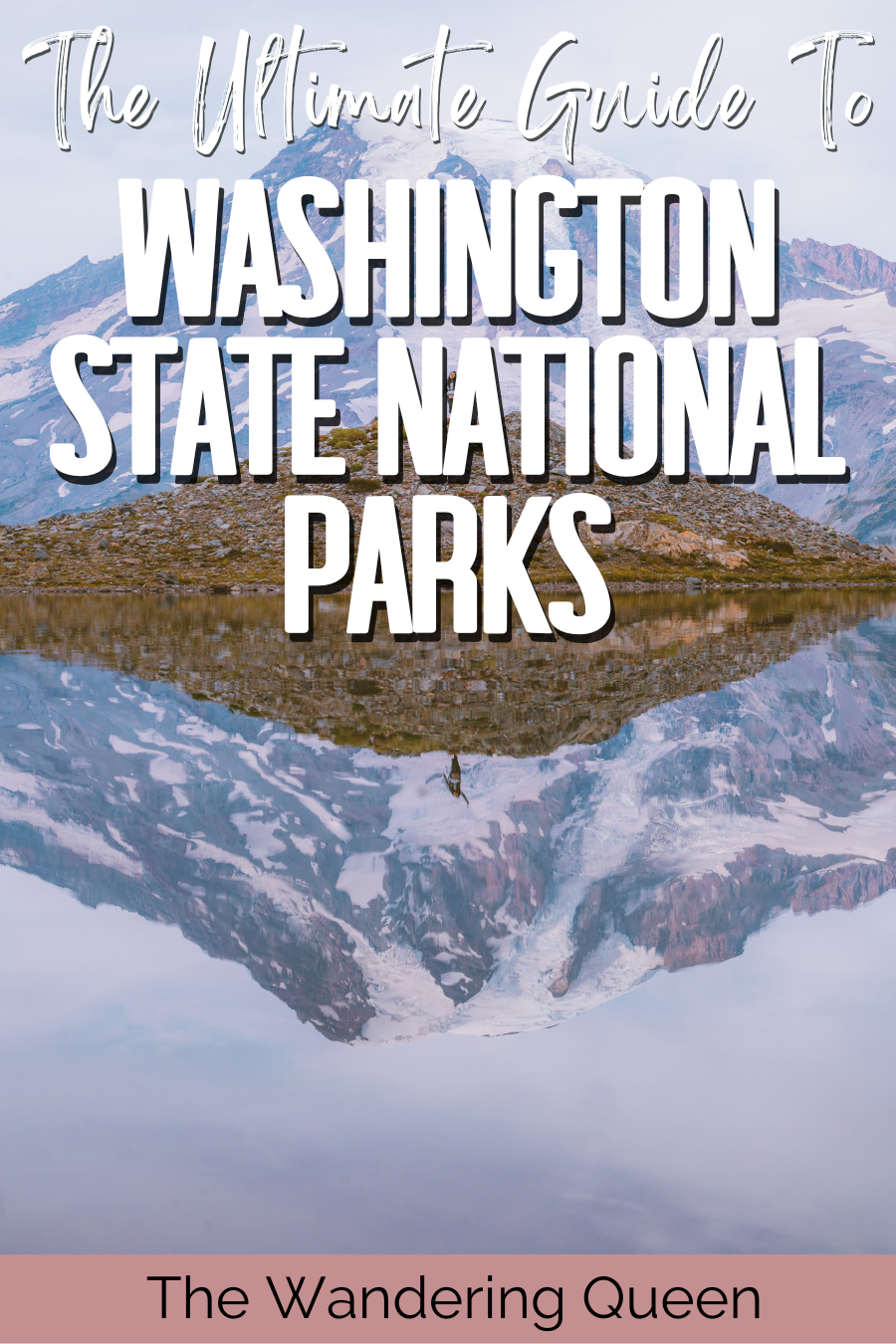
Disclosure: This post contains affiliate links. If you click one of them, I may receive a small commission (for which I am very grateful for) at no extra cost to you.
A Deep Dive Into Washington State’s National Parks
Hiking is easily one of the best things to do in Washington, and fortunately for you, the state’s national parks are teeming with opportunities. From the Olympic Peninsula to the Canadian border, here’s a complete guide to Mount Rainier, North Cascades, and Olympic National Park.
Tip: If you’re looking for even more details on exploring the Evergreen State, I’ve written a guide to Washington. If you want to learn more, grab a copy of my ebook here.
Which of Washington’s National Parks Is the Best to Visit?
There’s no right or wrong answer here, as it depends on what you want to discover during your travels.
If you want stunning coastal views and lush Sitka Spruce and Douglas Fir forest walks, Olympic National Park would be your ideal option. For eclectic glacial formations and the chance to visit an active volcano, Mount Rainier is your top choice. Lastly, for glacial-fed lakes with stunning mountain views, the North Cascades National Park should be your top pick.
Which of the Washington National Parks Is the Easiest to Visit?
If you’re flying into the state, you will most likely arrive at Seattle Tacoma International Airport (SEA). From Downtown Seattle, Mount Rainier National Park is the easiest to visit.
While Olympic National Park is technically the closest, you can either drive around the San Juan Islands or take a ferry and then drive. All in all, it’ll take around two hours to get to the Olympic Peninsula, while a drive to Mount Rainier is around an hour and 45 minutes.
The Best 10-Day Washington National Park Road Trip Route
If you’re wanting to see all three national parks in one trip, here’s my recommended 10-day road trip:
- Day 1: Arrive in Seattle and drive to Port Angeles near Olympic National Park (roughly a 2-hour and 40-minute driving time).
- Day 2 – Day 3: Explore Olympic National Park.
- Day 4: Drive from Olympic National Park to Longmire near Mount Rainier National Park (3 hours and 30 minutes driving time).
- Day 5 – Day 6: Explore Mount Rainier National Park.
- Day 7: Drive from Mount Rainier National Park to Concrete near North Cascades National Park (3 hours and 30 minutes driving time).
- Day 8 – Day 9: Explore North Cascades National Park.
- Day 10: Drive back to Seattle from North Cascades National Park (2-hour driving time).
Next Read: If you want more road trip ideas, check out my Washington road trip guide.
Olympic National Park
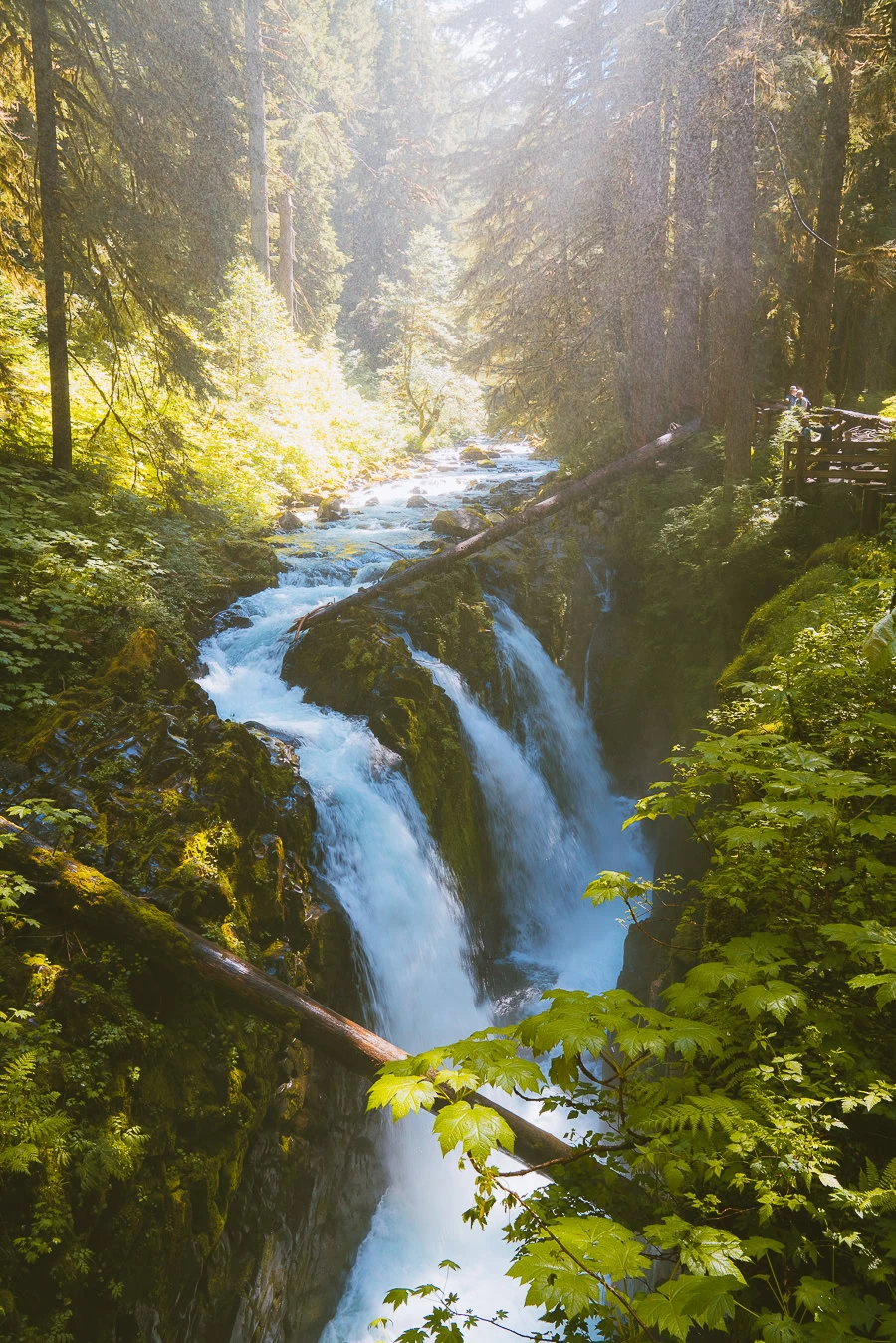
Whether you’re backpacking Olympic National Park or simply looking to visit the nearly a million acres of parkland, let me fill you in on all the key details you need to know.
The Best Time to Visit Olympic National Park

As a local, I’ve visited the park throughout the year and can confidently say summer (June to August) is the best time to visit Olympic National Park. For a more holistic look at the park, here’s a breakdown of each season:
- Summer: With mild to warm temperatures and the lowest average rainfall of the year, summer is my preferred season for hiking. You can expect highs of around 62°F and lows hitting 37°F at the very least.
- Spring: This is another good option, with cool to mild temperatures between 24°F and 49°F. The weather is fairly unpredictable in spring, so summer is still the ideal time to visit. That said, Olympic National Park does have some of the best spring hikes in Washington State, like the Staircase Rapids.
- Fall: It offers similar weather conditions to spring — with a slight increase in rainfall.
- Winter: Lastly, winter is, in all honesty, the worst time to visit, with the highest rainfall and icy cold conditions.
PS: I write extensively on the top hikes and activities of the national park in my Washington ebook.
How Many Days Do You Need to Spend at Olympic National Park
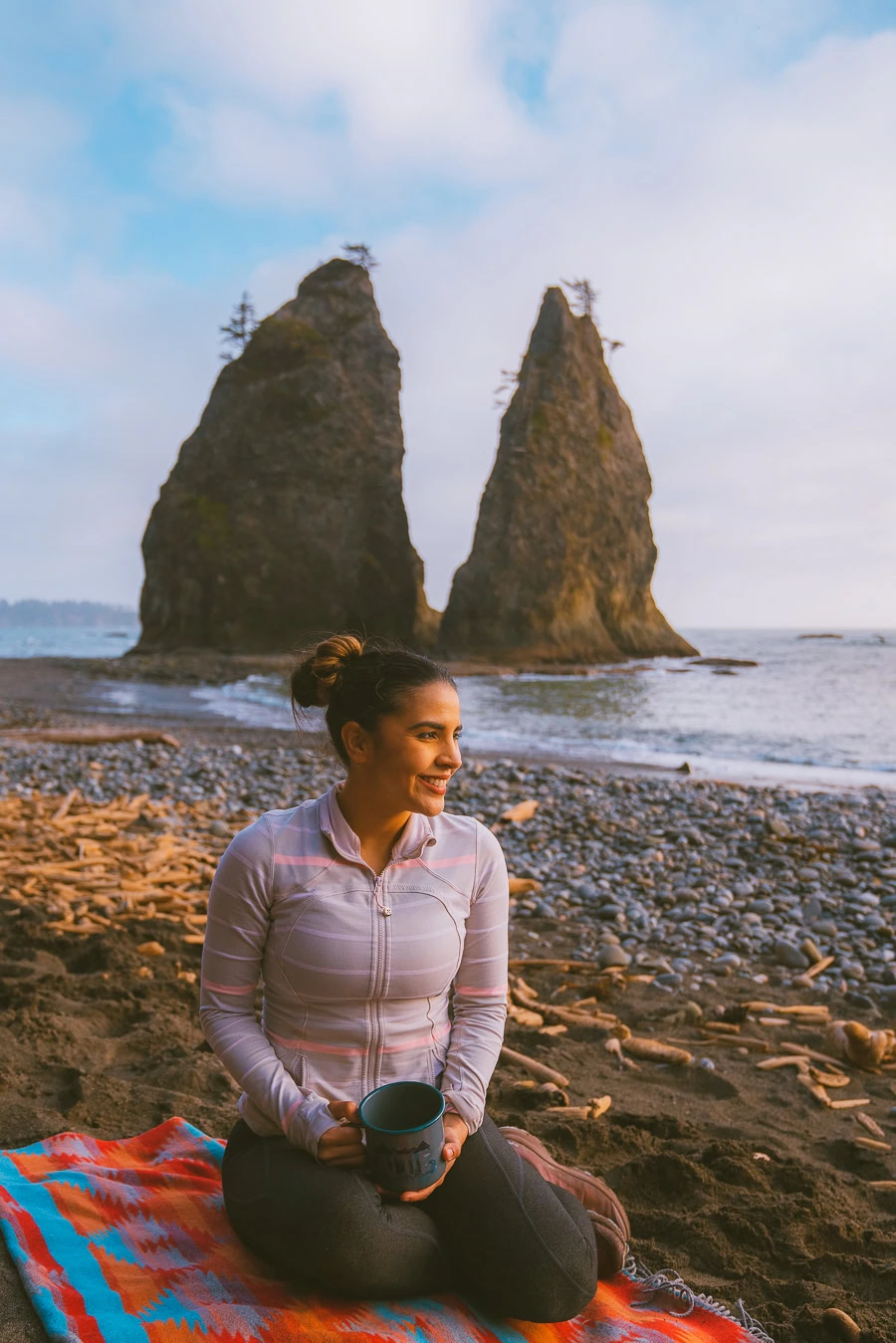
While you can catch a glimpse of each of the Olympic National Park’s ecosystems in one very long day, you will be rushed for time. It’s best to make it a long weekend, spending two to three days in Olympic National Park to truly absorb the region’s beauty.
The Ultimate 3-Day Olympic National Park Itinerary in a Nutshell
Here’s a quick breakdown of what you can expect to do during a long weekend in Olympic National Park:
Day One
- Explore Port Angeles
- Hike to Madison Falls
- Wander along Hurricane Ridge
Day Two
- Trek to Sol Duc Falls
- Visit Marymere Falls
- Hike up Mount Storm King
Day Three
- Enjoy Rialto Beach
- Visit Second Beach and/or Third Beach
- Hike the Hall of Mosses
- Admire Kalaloch Beach
- End the trip at Ruby Beach
Tip: For a more in-depth look at your long weekend, look at my Olympic National Park itinerary post.
How to Get to Olympic National Park
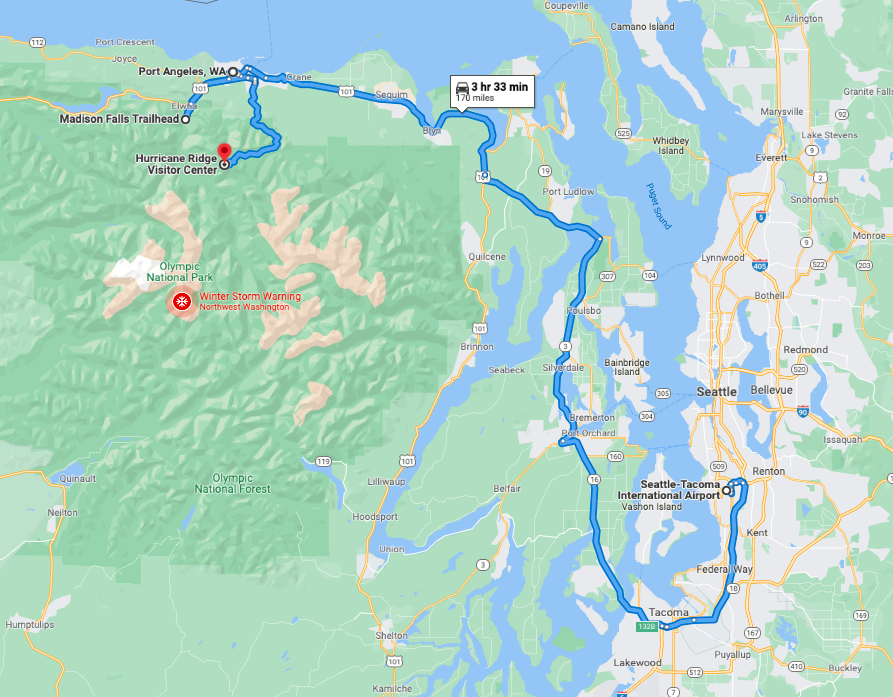
Seattleites are familiar with the many ways to get to Olympic National Park, but there are three standout routes I’d suggest to first time visitors. All the routes will take between two-and-a-half and three hours, factoring in traffic and ferry schedules.
Route One: For the quickest and most direct route, take the ferry from Seattle to Bainbridge Island. From there, drive along the WA-305 before merging onto the WA-3. You’ll then turn left on the WA-104 before completing the rest of the journey along the WA-101 to Port Angeles.
Route Two: Head north to Edmonds, where you’ll take the ferry to Kingston. From Kingston, you’ll drive along WA-104 until you merge with WA-101, after which it’s a direct drive to Port Angeles.
Route Three: If you don’t want to take the ferry, you can drive along the I-5 to Tacoma. Once you reach Tacoma, you’ll go along the WA-16 and WA-3 before merging onto the WA-104. From there, you’ll drive along the WA-104 and onto the WA-101 before reaching Port Angeles.
Note: Although more direct with less mileage, taking the ferries will be slightly pricier.
The Different Sections of Olympic National Park
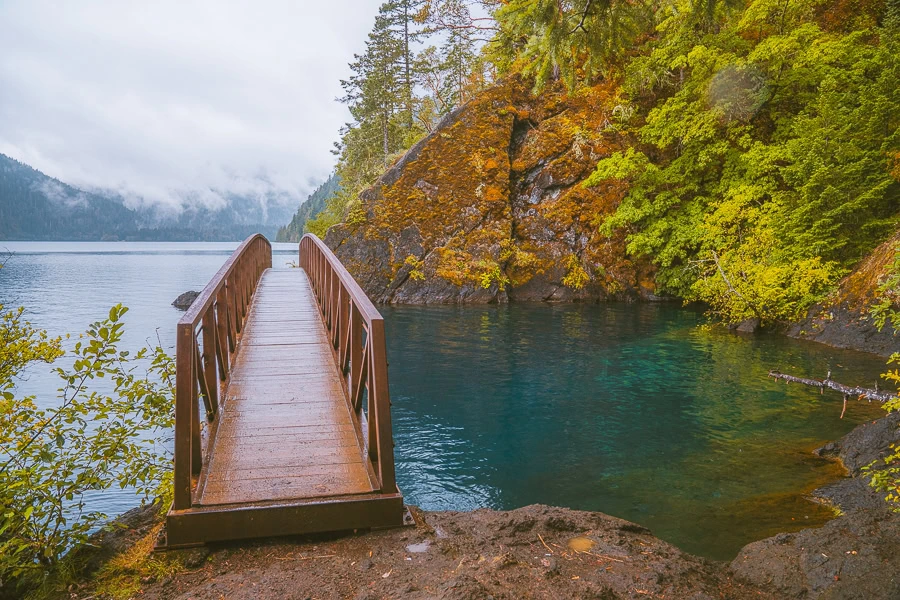
There are five distinct regions within Olympic National Park, each offering a unique ecosystem. Here’s a quick glimpse at what you can expect from each section of the park.
Tip: The two regions of the park I’d say you absolutely have to see are the Northern Olympic National Park and the Pacific Coastline.
- Northern Olympic National Park: Located near Port Angeles, this region is home to some of the most visited landmarks in the park. These include Hurricane Ridge, Marymere Falls, Sol Duc Falls, and the scenic Obstruction Point Road.
- Pacific Coastline: As the name suggests, you’ll be able to catch a glimpse of the park’s stunning beaches and wild coastline here. Some of the top locations you can expect to find along this 60-mile stretch include Ruby Beach, Rialto Beach, Point of Arches, and the historic area Cape Flattery.
- Hoh Forest: The Hoh Forest is one of the hidden gems of the park and the perfect example of a temperate rainforest in the US. From the Hall of Mosses and the Spruce Nature Trail to the eclectic Mineral Creek Falls along the Hoh River, there’s plenty to see in this region.
- Quinalt: Located in the southern regions of the park, Quinalt is the lesser-visited area of the Olympic Peninsula that deserves far more praise than it gets. It’s notorious for the lung-busting Enchanted Valley hike, Merriman Falls, and the Lake Quinault scenic drive.
- Staircase Area: The North Fork Skokomish River flows through the region, offering stunning views of cascading rapids and small waterfalls, which can be seen along the Staircase Rapids Loop Trail. Other key landmarks in the area include Mount Ellinor and the picturesque Lena Lake.
Hint: I break down all the top hikes for each region in my Olympic National Park hiking guide.
What to Do at Olympic National Park
While there are tons of amazing things to do in Olympic National Park, here are the top five activities I think you can’t miss.
1. Hike the Enchanted Valley
- Mileage: 26 miles (out-and-back)
- Elevation Gain: 1,700 feet
- Difficulty: Hard
- Trail Guide: Link
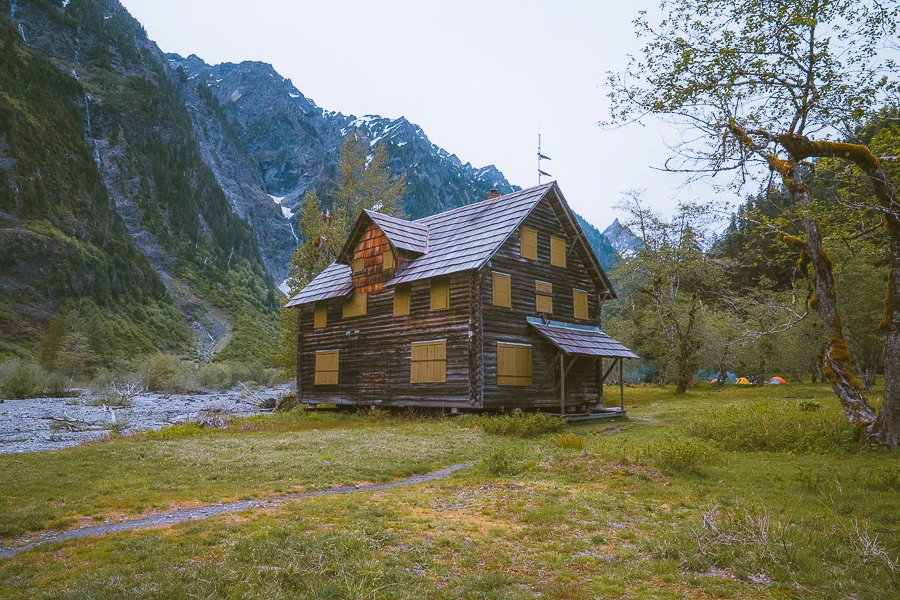
For the complete experience of Olympics Quinault region, you simply have to tackle a multi-day trek through the Enchanted Valley. Starting at the Graves Creek Trailhead, This is a challenging hike with plenty of scrambling, high inclines, and scenic views.
If you’re short on time, you can just trek the 3.4 miles to Pony Bridge, where the emerald waters of the Quinault River are truly mesmerizing. The Enchanted Valley earns its name from the scenic O’Neil Creek at the halfway point to the birch-surrounded Pyrites Creek.
The trail ends with the magical views of the Enchanted Valley, where an iconic chalet serves as the perfect backdrop for your photos.

Tip: For an in-depth look at my experience, check out this Enchanted Valley guide.
2. Discover Madison Falls
- Mileage: 0.2 miles (out-and-back)
- Elevation Gain: 26 feet
- Difficulty: Easy
- Trail Guide: Link
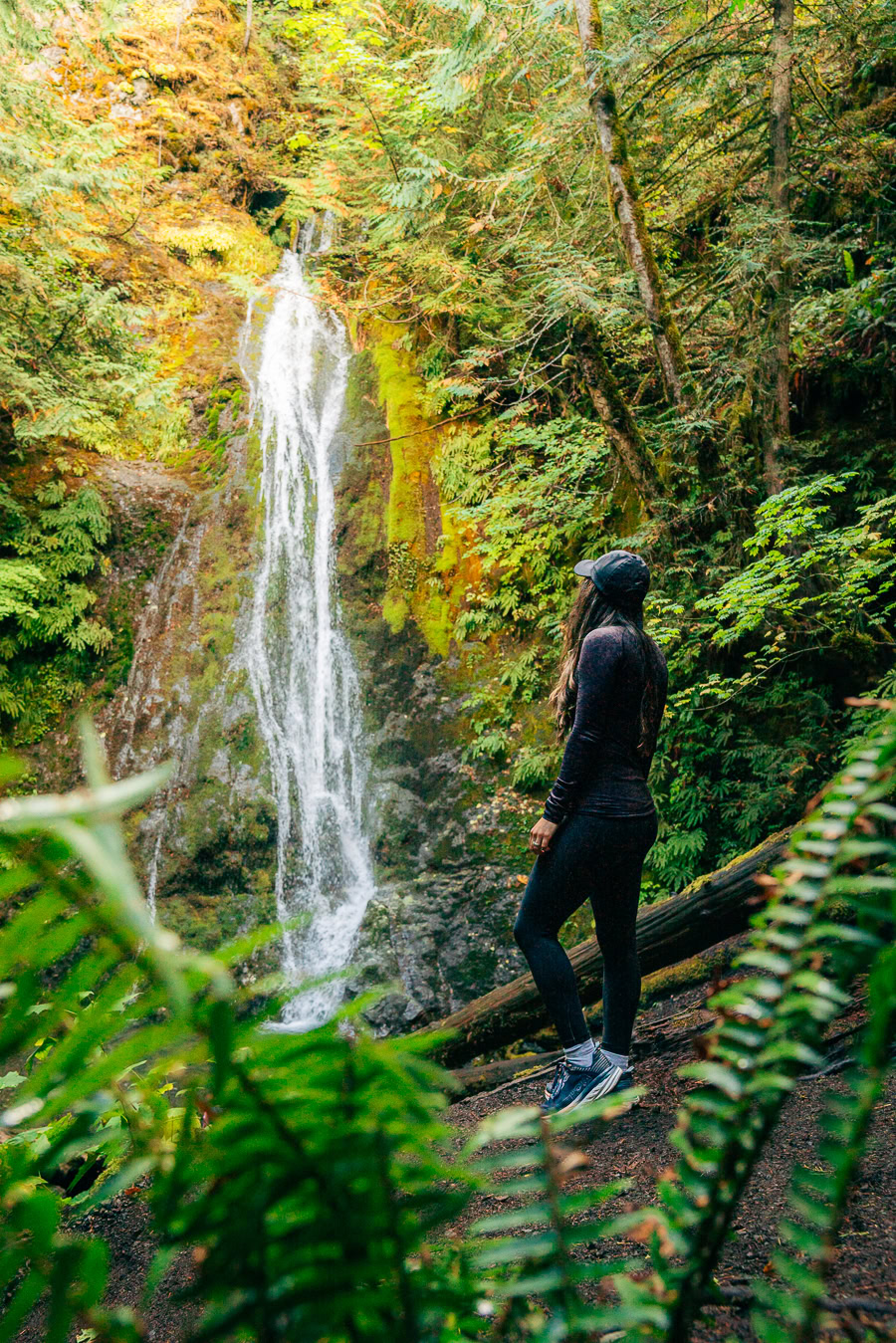
If you’re going waterfall hunting in Washington, Madison Falls is an absolute must-visit. Starting alongside the Olympic Hot Springs Road, the paved trail passes an open meadow with a picturesque 19th-century homestead in the background.
After a short, gentle walk through a forested area, the enigmatic falls reveal themselves. Like a white veil, the cascading water looks like a drapery over the mossy cliffs.

Note: Olympic Hot Springs Road regularly has road closures due to flooding, and this trail is currently closed for repairs from April 2024 to January 2025.
3. Visit Hurricane Ridge
- Mileage: 3.4 miles (out-and-back)
- Elevation Gain: 826 feet
- Difficulty: Moderate
- Trail Guide: Link
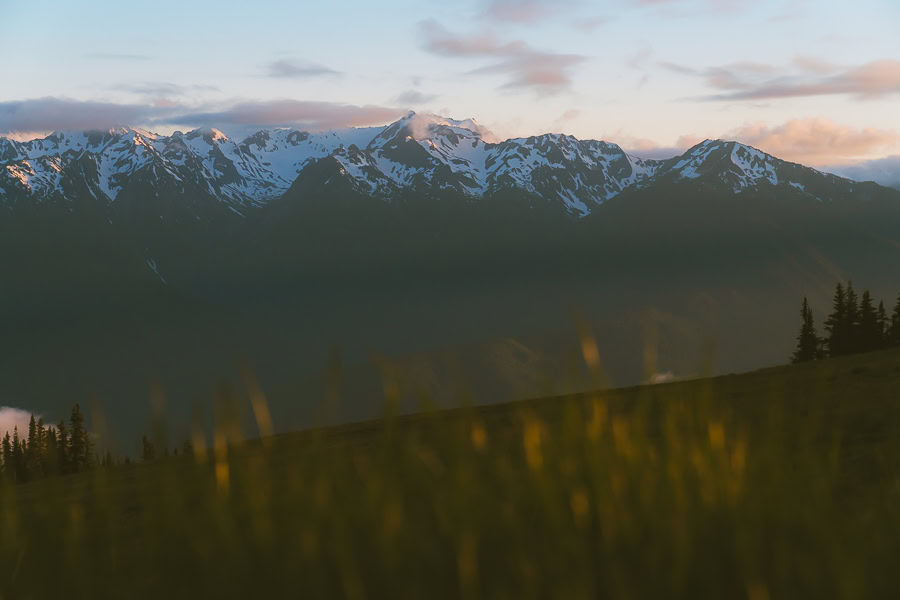
Before heading towards Hurricane Hill, consider getting an early start to your day by trekking the short 0.9-mile route to Sunrise Point. It’s a super short and family-friendly route that, as the name suggests, offers stunning sunrise views of Olympic and Port Angeles in the distance.
There are many reasons why I think the hike to Hurricane Hill is one of the best in the park. But if you had to ask for the standout reason, it has to be due to the spectacular vistas throughout the trek. One thing to note is the junction around 1.4 miles into the trail. You’ll need to take a right to get to Hurricane Hill.
Download my Washington Hiking Checklist!
4. Hike Mount Storm King
- Mileage: 4.1 miles (out-and-back)
- Elevation Gain: 2,106 feet
- Difficulty: Hard
- Trail Guide: Link
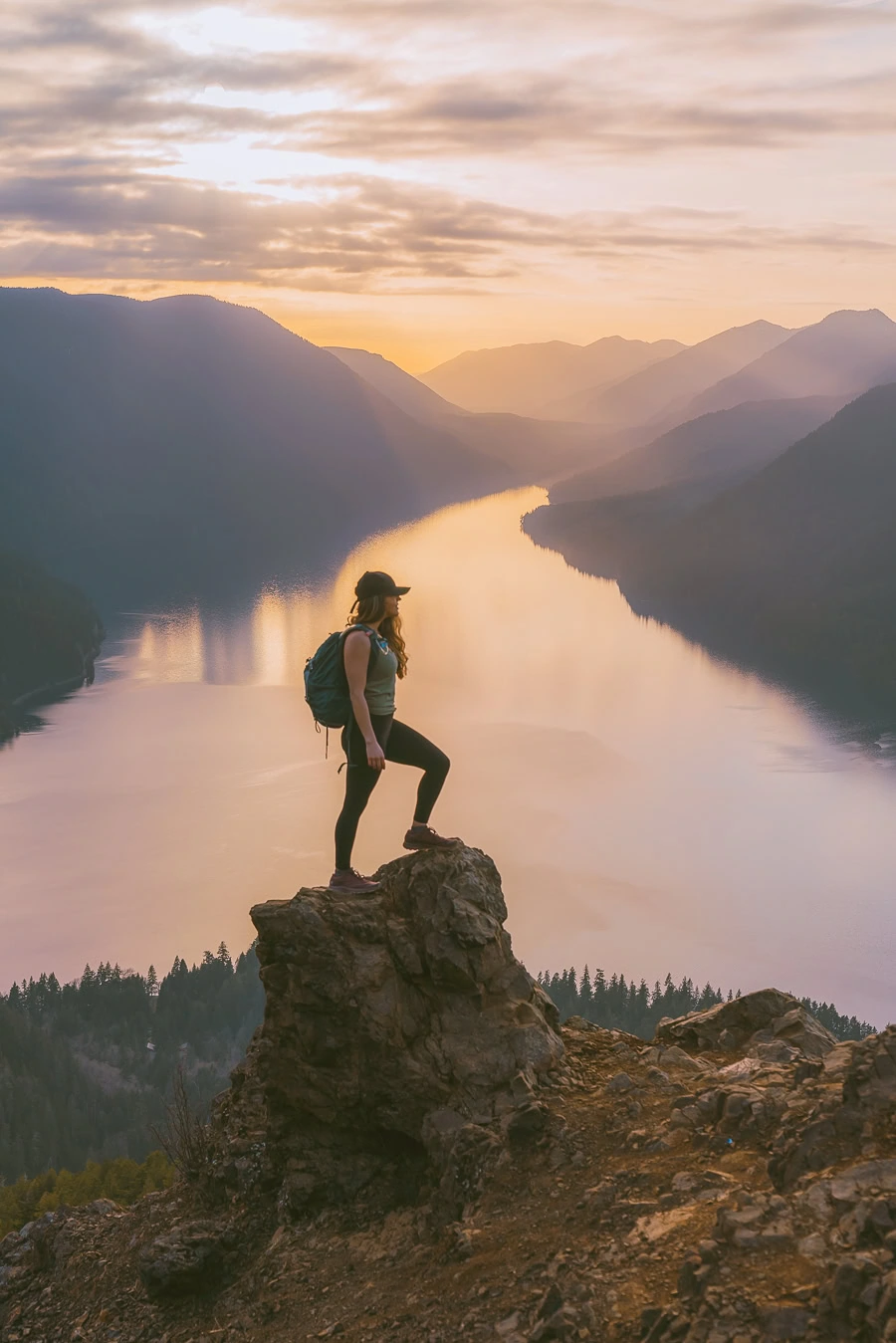
For a challenging trek to a viewpoint of Lake Crescent that is second to none, you have to tackle the Mount Storm King Trail. The elevation gain is pretty insane, but I’d definitely do it again.
At one point in the hike, you have to use the rope system along the trail to pull yourself up certain points — yes, it’s that steep. Despite this, the vistas over Lake Crescent are truly mesmerizing, and if you take on the hike at sunset, you’ll be able to snap some golden hour photos.

Note: Please be careful at the rope sections on the way down, as this is where most people injure themselves.
5. Explore the Park’s Stunning Beaches
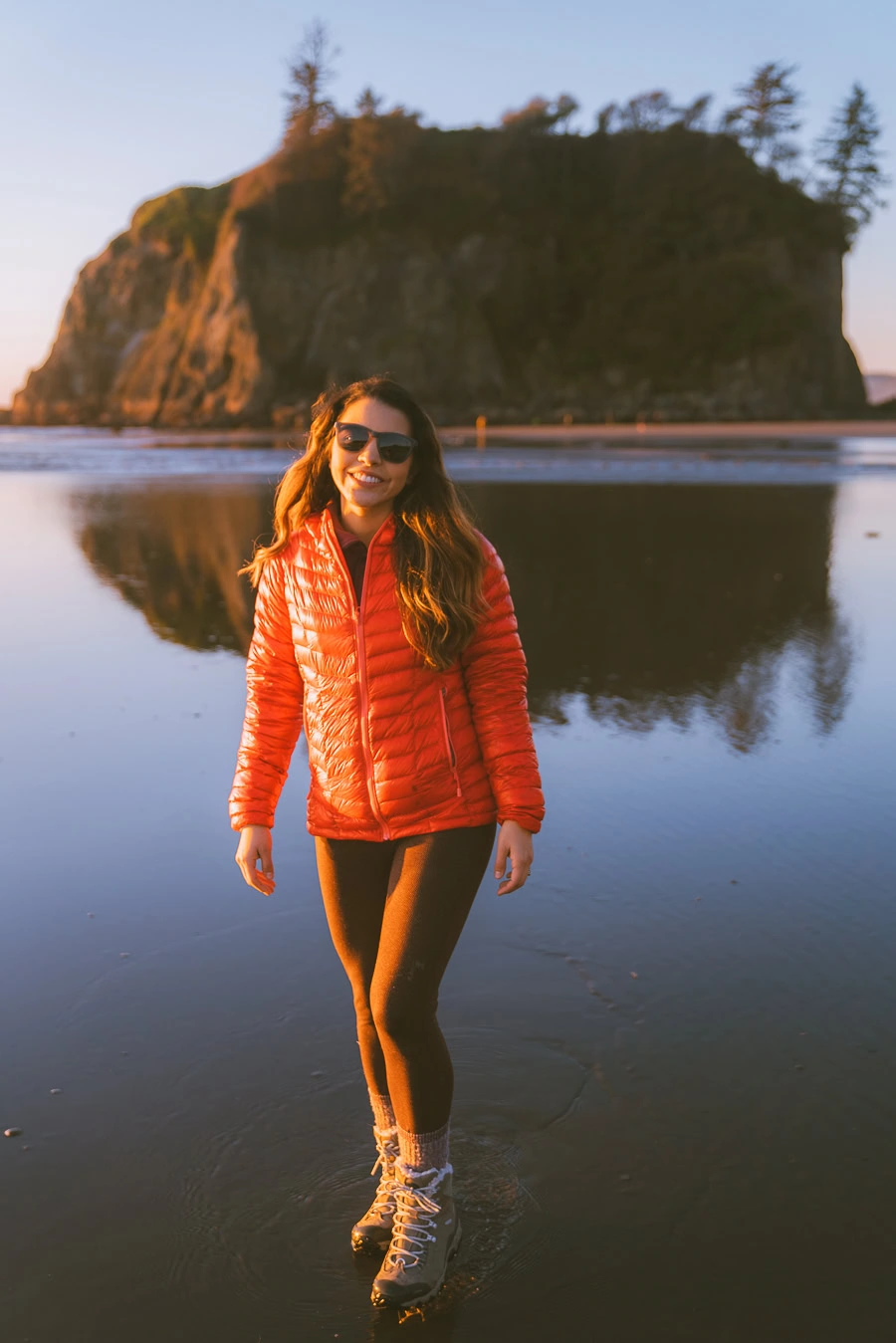
A visit to the park would be incomplete without witnessing the dramatic coast of the Olympic Peninsula. As such, here are the best beaches you can’t go wrong with:
- Rialto Beach — Hike the Hole in the Wall trek from Rialto Beach for epic coastal scenes.
- Kalaloch Beach — Don’t forget to visit the iconic Tree of Life along Kalaloch Beach.
- Ruby Beach — It’s known for its silky red sand, making it a stunning place to walk and enjoy the cool Pacific waters.
- Shi Shi Beach — Strap on your hiking boots and take on the 8.8-mile-long trail to the secluded Shi Shi Beach.
- Second Beach — You’ll need to take on a 2-mile trek through dense forest to reach the coastal oasis peppered with sea stacks and majestic sunset views.
Where to Stay Near Olympic National Park
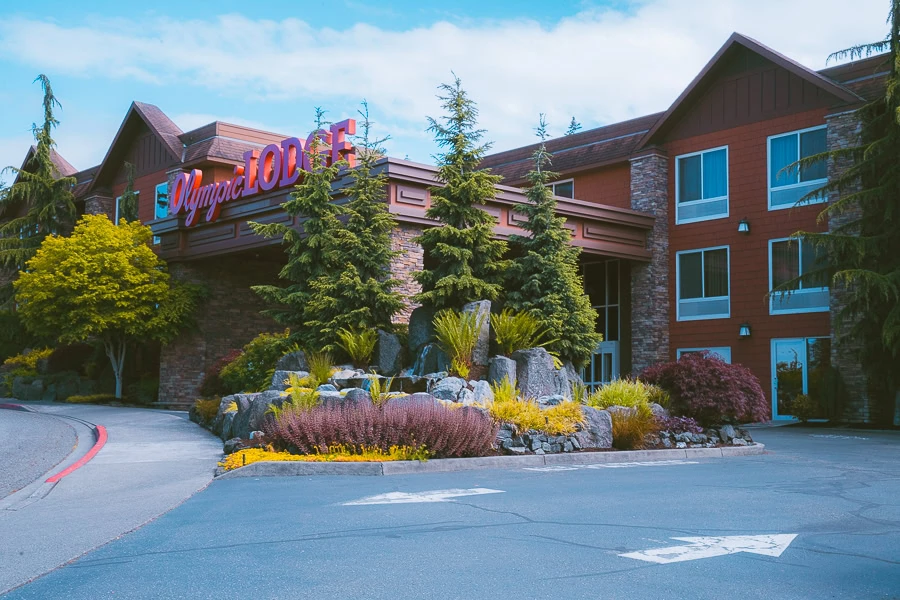
Unlike most national parks in the US, Olympic is one of the few that has lodgings within the park. As such, here are my top places to stay in Olympic for every budget:
Budget | Super 8 by Wyndham
Nestling in the heart of Port Angeles, Super 8 is an affordable option that offers everything you need for a comfortable trip to Olympic National Park. From the plush bedding to the stunning forest views, you’ll have everything you need here. The hotel is a short walk from the Olympic Coastal Trail and just 2.3 miles from the park’s visitor center. >>>Check Availability
Mid-Range | Lake Crescent Lodge
For a stay at a historic lakeside lodging in the heart of Olympic National Park, look no further than Lake Crescent Lodge. Rooms come with a balcony offering lakeside views, a Keurig coffee maker, and other small amenities that make your stay worthwhile. You can also enjoy lunch and dinner at the on-site restaurant. >>>Check Availability
Luxury | Olympic Lodge by Ayres
For utter opulence, the Olympic Lodge is second to none. The lounge offers stunning meadow views, while the on-site restaurant exemplifies American hospitality. Make the most of the wellness center and the heated pool after a long day of exploration. >>>Check Availability
Camping | Second Beach Campground
While Olympic National Park has plenty of lovely campgrounds, there’s just something special about Second Beach. You’ll be roughing it out here with no amenities, so you’ll need to bring everything you need for the night. Despite this, the sunrise and sunset views are truly magnificent. >>>Learn More Here
Tips for Visiting Olympic National Park

- If you intend to take the ferry, see the ferry schedules and buy your ferry ticket using this link.
- If you travel in summer, you will see plenty of bears in the park. Read my animal safety tips to stay safe.
- Double-check if the trail you want to hike requires a permit at the regional National Park Service Center.
- I’d recommend staying in Port Angeles for easy access to the park, and it offers lovely views of San Juan Island on a clear day.
- Go skiing or snowboarding with the Hurricane Ridge Winter Sports Club.
FAQs About Olympic National Park
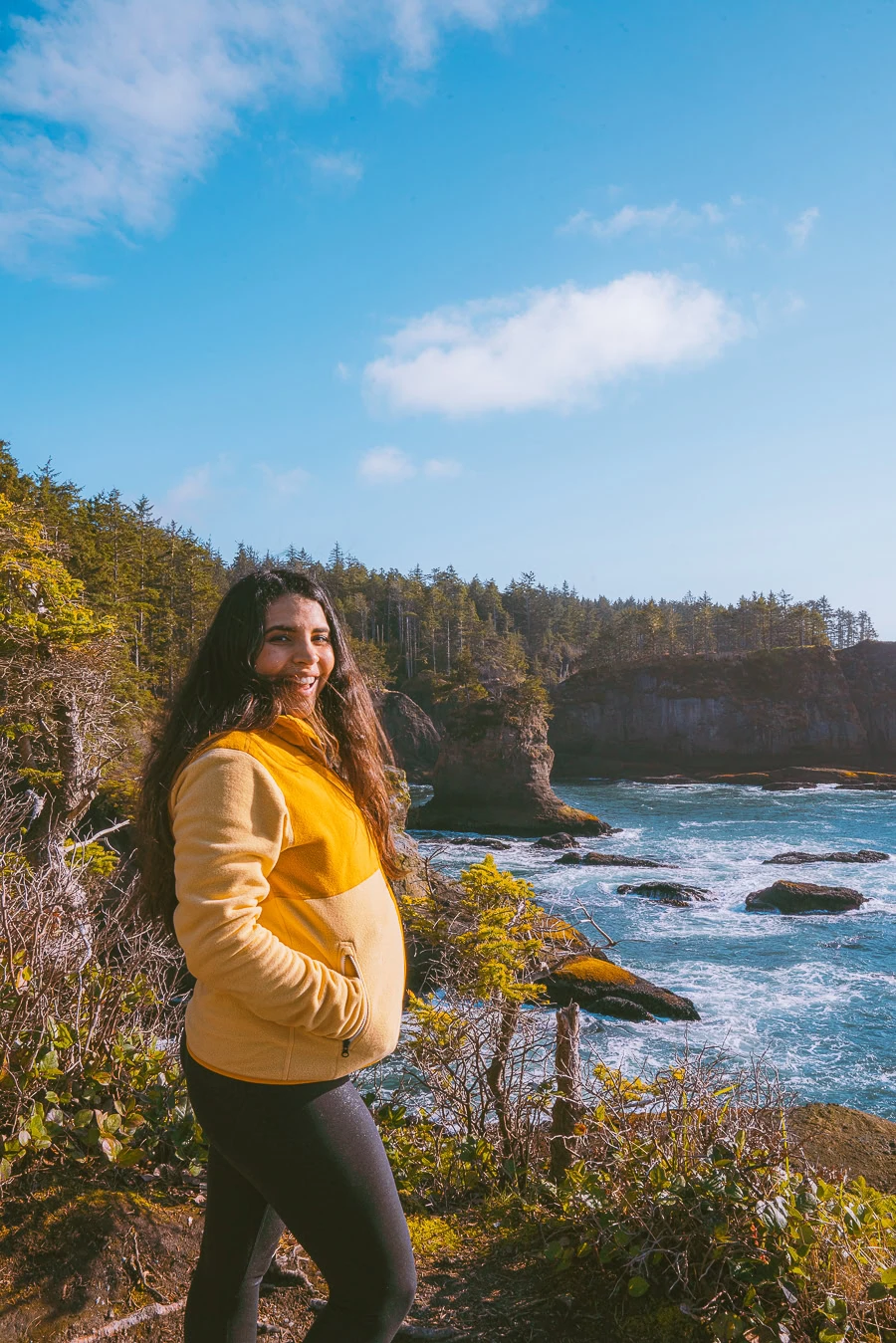
Before moving on to the next Washington national park, here are some FAQs to keep in mind before you visit Olympic.
Is There a Fee to Enter Olympic National Park?
If you’re just visiting the park once, you’ll need a Standard Pass, which costs $15 per person and $30 for a private vehicle. If you are a fellow local Seattleite, get an Annual Pass ($55) or the America the Beautiful Pass for access to multiple national parks across the country.
How Long Is a Ferry Ride to Olympic National Park?
While there are a couple of ferry routes you can take, each takes around 35 minutes. Then it’s usually an hour and 45-minute drive from the ports to Olympic National Park.
Do You Need a Car to Get to Olympic National Park?
While Clallam Transit does offer public transportation throughout the park, they don’t go to all the regions of the park. As such, I’d recommend using a personal car.
Mount Rainier National Park
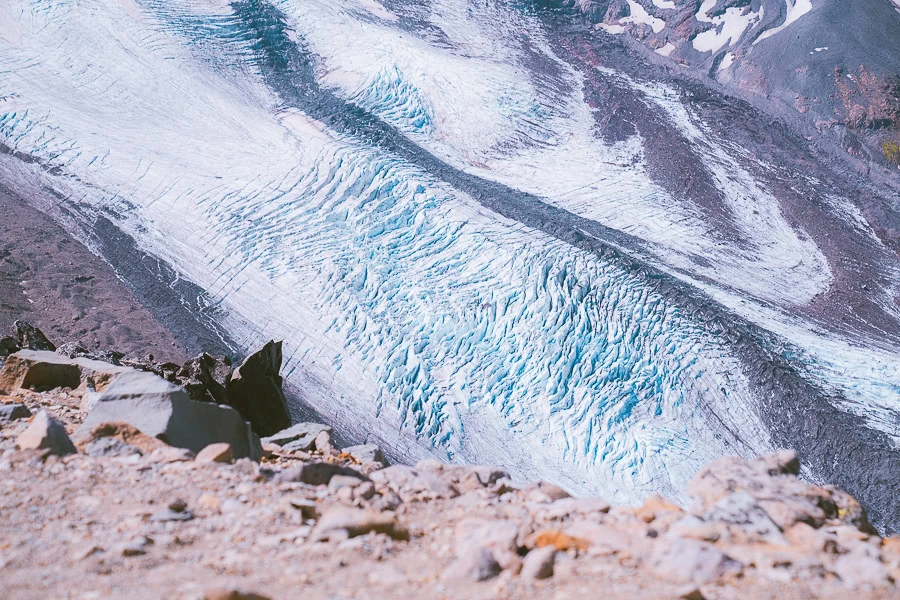
Just southeast of Seattle, Mount Rainier is another magical part of this state I call home. It’s time to dive into all the major and minor details about Mount Rainier National Park.
The Best Time to Visit Mount Rainier National Park

I’ve visited Mount Rainier many times now, and from my personal experience, late summer between July and August is the best time to visit. That said, everyone has their preferences, so here’s what you can expect weatherwise for each season.
- Summer: The mild to warm temperatures between 48°F and 73°F mean warm layers are still necessary. It is the driest time of the year, and the wildflowers come out in late summer, making it a truly stunning time to visit.
- Spring: This is one of the worst times to visit, with high rainfall and very cool conditions.
- Fall: Much like spring, fall brings icy cold conditions, and the rainfall picks up significantly. It is still an okay time to visit, though, and it offers the classic fall color palette.
- Winter: Lastly, winter has its perks, as it’s a haven for skiers and snowboarders. It gets freezing with highs of 33°F and lows of around 23°F.
Next Read: Read my detailed guide on the best time to visit Mount Rainier.
How Many Days Do You Need to Spend at Mount Rainier National Park
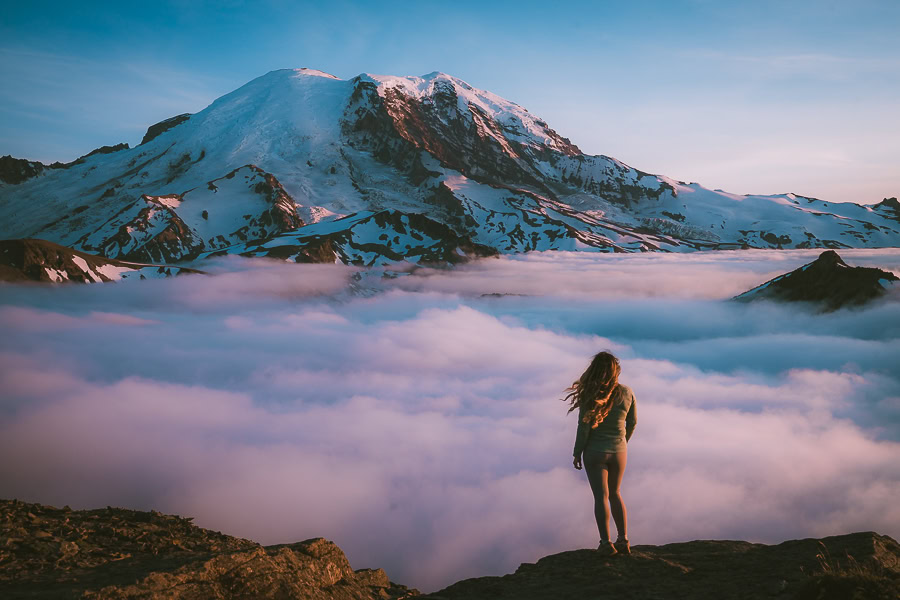
While you can easily enjoy a full-day trip to Mount Rainier, you’ll most likely only be able to visit the Ohanapecosh Area or the Sunrise Area, not both. As such, I’d recommend at least two to three days so you can enjoy the park without rushing past each location.
The Ultimate 2-Day Mount Rainier National Park Itinerary in a Nutshell
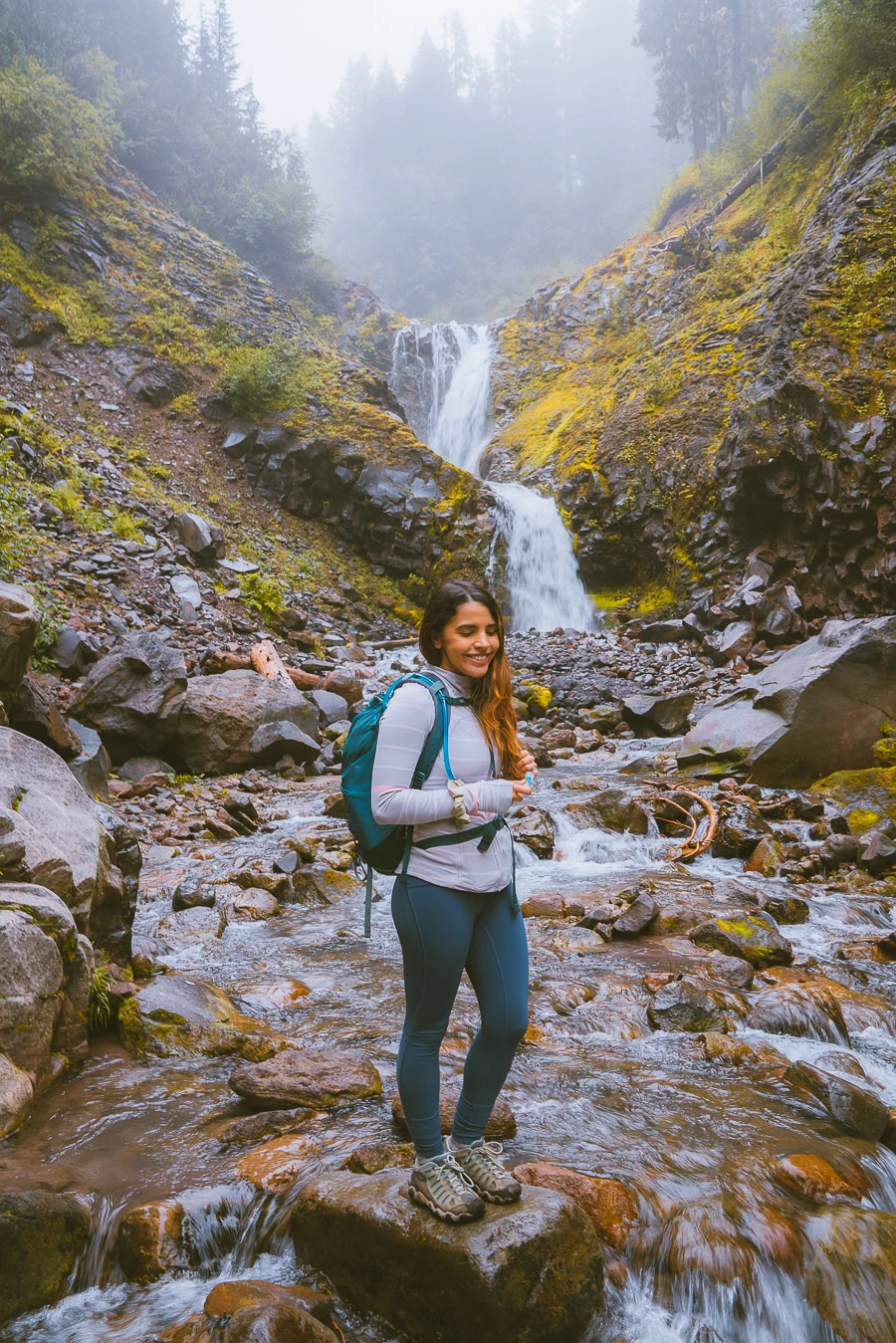
Here’s a quick breakdown of what you can expect to do during a long weekend at Mount Rainier National Park:
Day One
- Stop at Christine Falls and Narada Falls
- Hike the Skyline Loop Trail
- Visit Reflection Lake
- Trek the Bench and Snow Lakes Trail
- Have Lunch in Packwood
- Walk the Grove of the Patriarchs Loop
- Hike to Silver Falls
Day Two
- Admire the sunrise at Fremont Lookout
- Trek up to Burroughs Mountain Peak
- Have a picnic near the Sunrise Visitor Center
- Hike the Naches Peak Loop Trail
All the best views in the state
100+ WA Hikes
Embark on Washington’s best trails with our eBook! Inside, find top hikes, expert tips, and stunning views, making every adventure unforgettable. Dive into the beauty of Washington’s outdoors now!
How to Get to Mount Rainier National Park
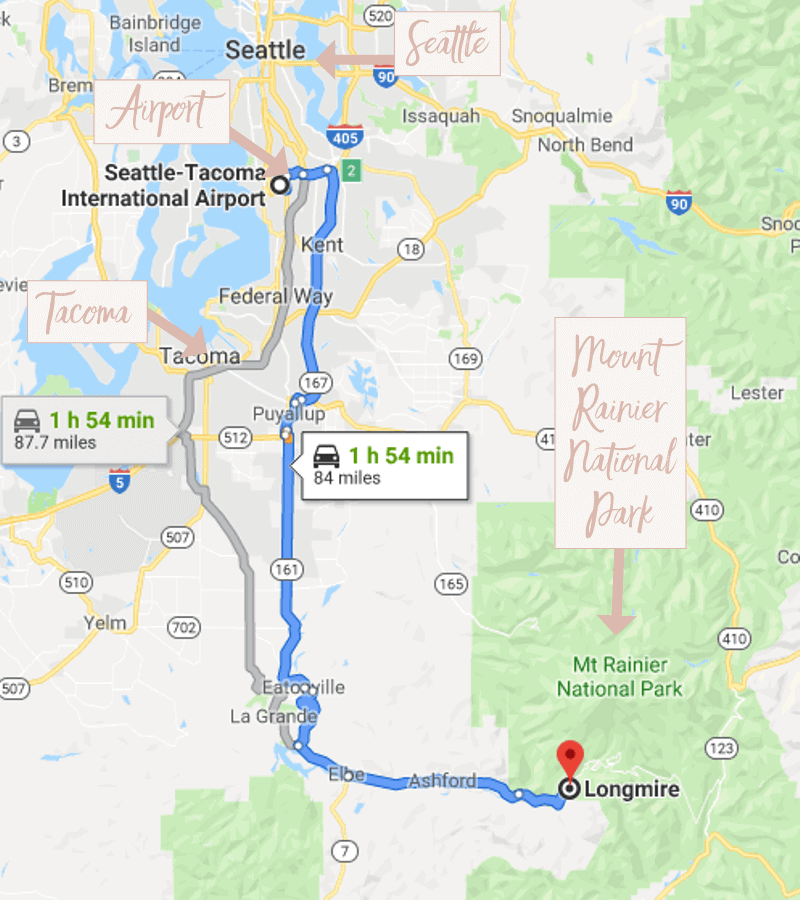
The quickest route from Seattle to Mount Rainier National Park will take just under two hours to drive. You’ll travel along the I-5 and WA-167 before merging on WA-161 for the majority of the rest of the drive. Then, take the WA-7 and WA-706 all the way to Longmire.
There aren’t any direct bus lines from Seattle to Mount Rainier, and the park doesn’t provide a shuttle service. So, realistically, you’ll need to have your own car or join a guided tour from Seattle.
Tip: If you’re on a Washington road trip, a drive from Olympic National Park will take around three and a half hours.
The Different Sections of Mount Rainier National Park
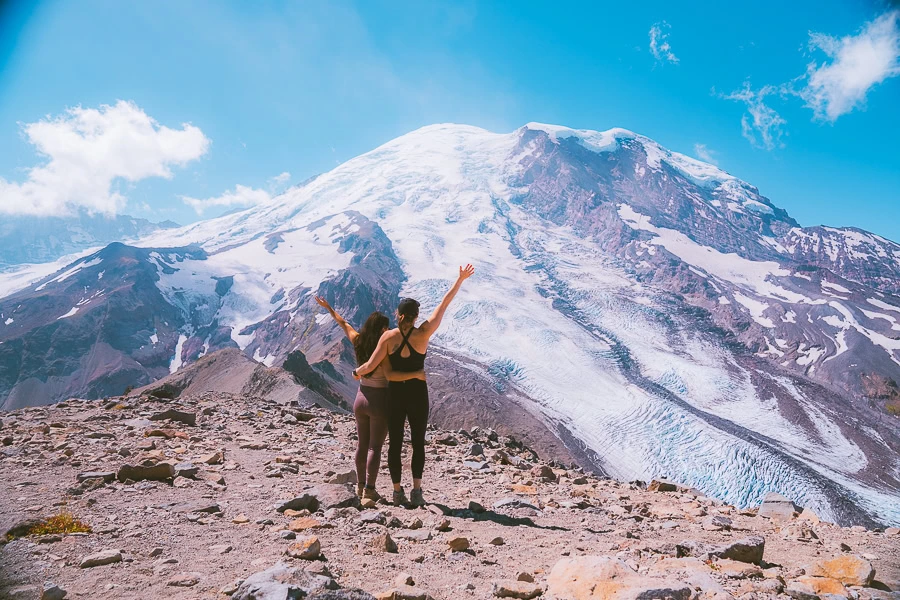
Mount Rainier National Park is broken down into five areas, with two distinct regions, Paradise/Ohanapecoch and Sunrise. Each section has its perks and offers a unique experience of this volcanically active park. As such, here’s a look at what you’ll find in each section of the park.
- Paradise/Ohanapecosh: This is the far more accessible section of the park. You’ll find stunning waterfalls like Christine Falls and Narada Falls here, as well as Reflection Lake and several scenic viewpoints. This side of the park caters to those with mobility issues far more and is the side you’ll most likely visit first when traveling from Seattle.
- Sunrise: While it’s slightly more out of the way, I’d have to say Sunrise is the prettier of the two regions. It’s also the side that offers the best hiking experiences with the Fremont Lookout, Burroughs Mountain, and Naches Peak Trail, all in this region. It is less accessible than Paradise, though, with many of the trails closed during the winter months.

Tip: Do you intend to ski at Mount Rainier, but there are road closures? Hop over to Crystal Lake Resort, which is just 26 miles from Sunrise and is open year-round.
What to Do at Mount Rainier National Park
Now, it’s time to get stuck into the top things to do in Mount Rainier that I try to do each time I visit the park.
1. Explore the Falls of Mount Rainier
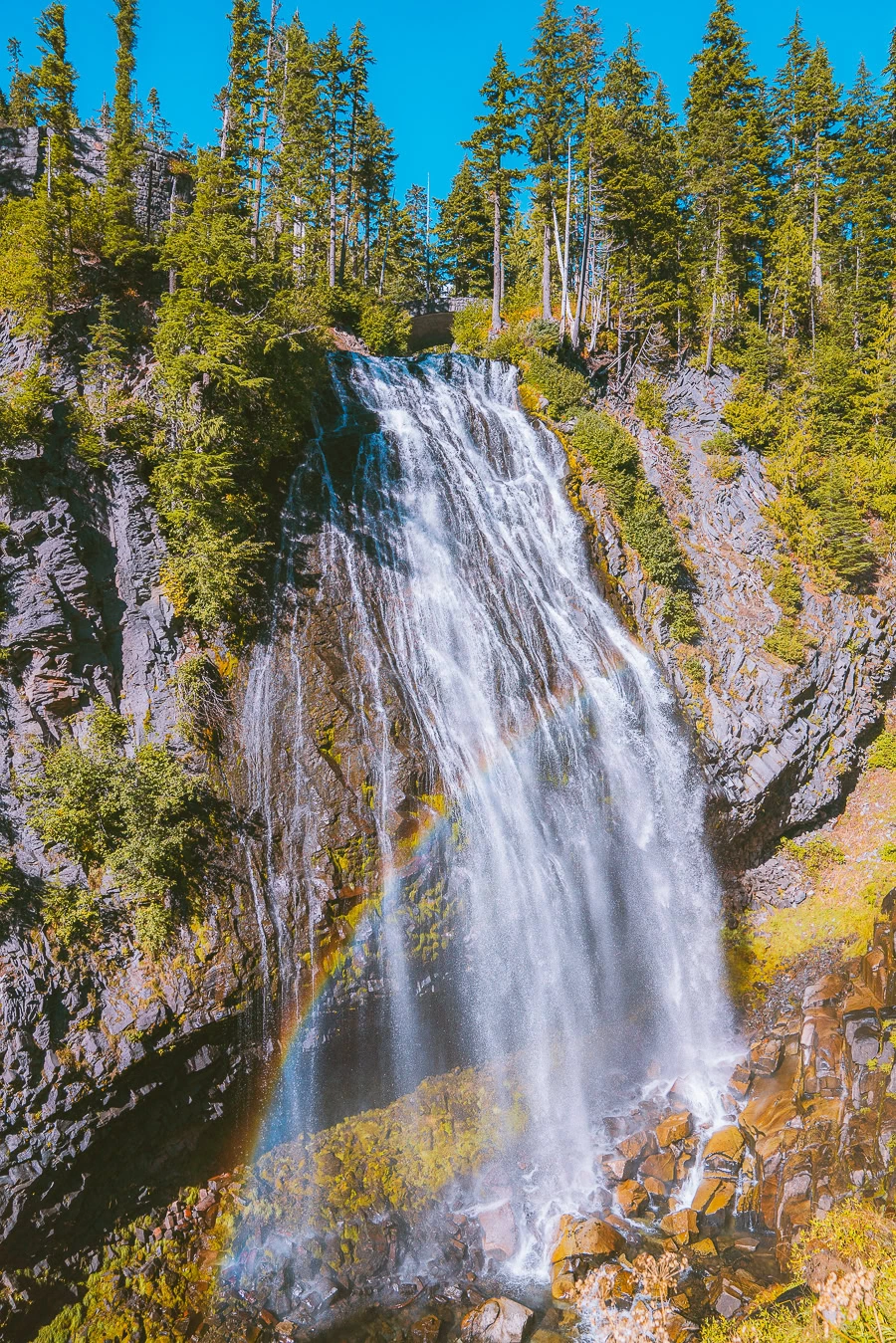
With 23 waterfalls in Mount Rainier National Park, it’s safe to say you’re spoilt for choice. But which waterfalls should you absolutely visit? Here are my top picks:
- Myrtle Falls: Like water pouring down a flight of stairs, Myrtle Falls is a 60-foot wonder just 0.4 miles from Paradise Inn.
- Narada Falls: Admire its 168-foot plunge down an andesite lava flow to the valley floor.
- Christine Falls: This 60-foot-high waterfall is perfectly framed by an arched bridge.
- Martha Falls: You’ll be able to see this 125-foot waterfall from the road when driving along Stevens Canyon Road.
- Ohanapecosh Falls: When heading to Grove of the Patriarchs, consider tackling the 3.7-mile trek to this double-plunge waterfall.
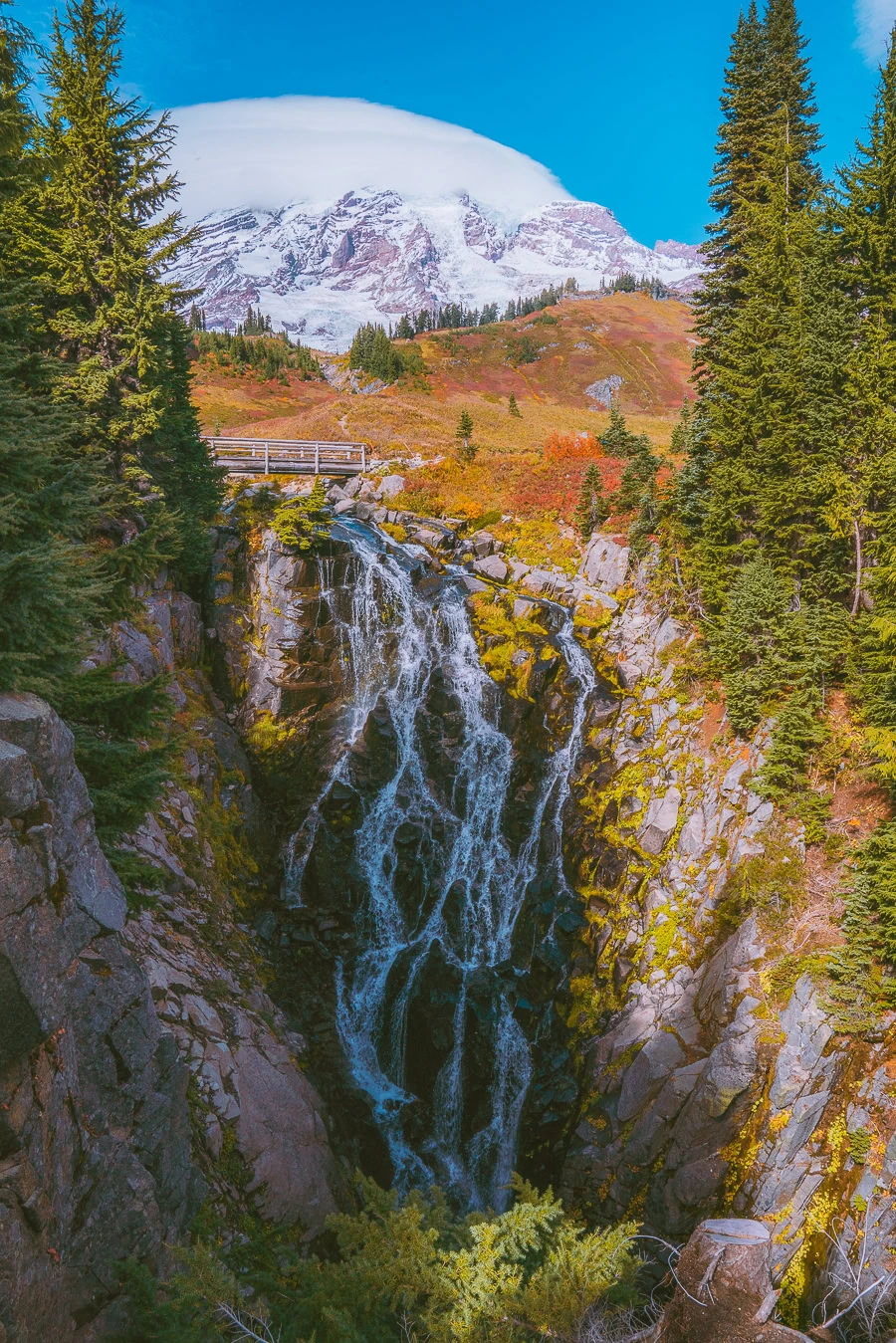
2. Admire Reflection Lake
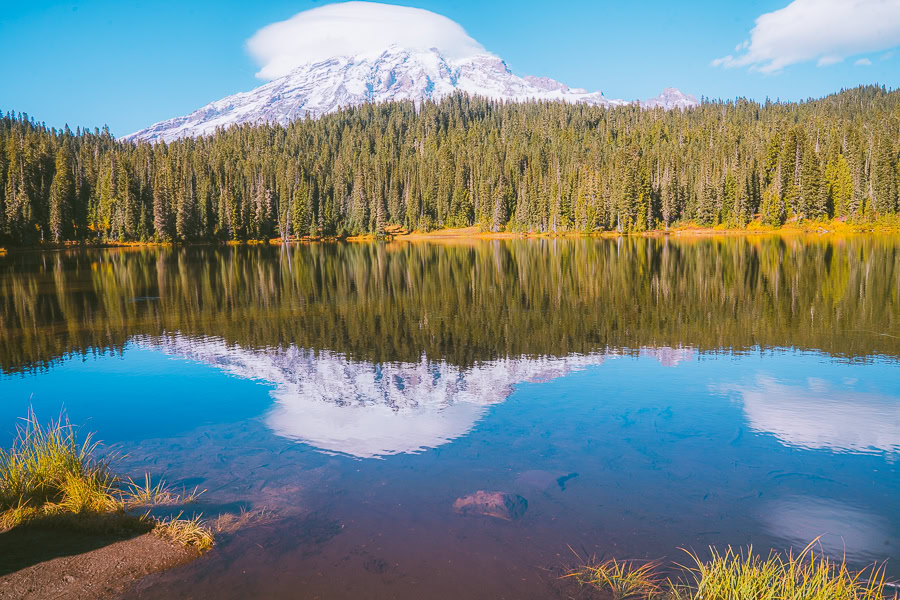
As far as alpine lakes go, Reflection Lake is one of the cleanest you’ll ever find. The crystal clear water, still surface, and eclectic mountain views are a match made in heaven for the avid photographer.
Come summer, and the wildflowers and abundant wildlife create a picturesque setting. In fall, the warm hues of the changing leaves and snow-topped Mount Rainier in the distance create the perfect backdrop for a family photoshoot.
Note: The lake is located along Stevens Canyon Road, which is closed during winter.
3. Discover Some Fire Lookouts
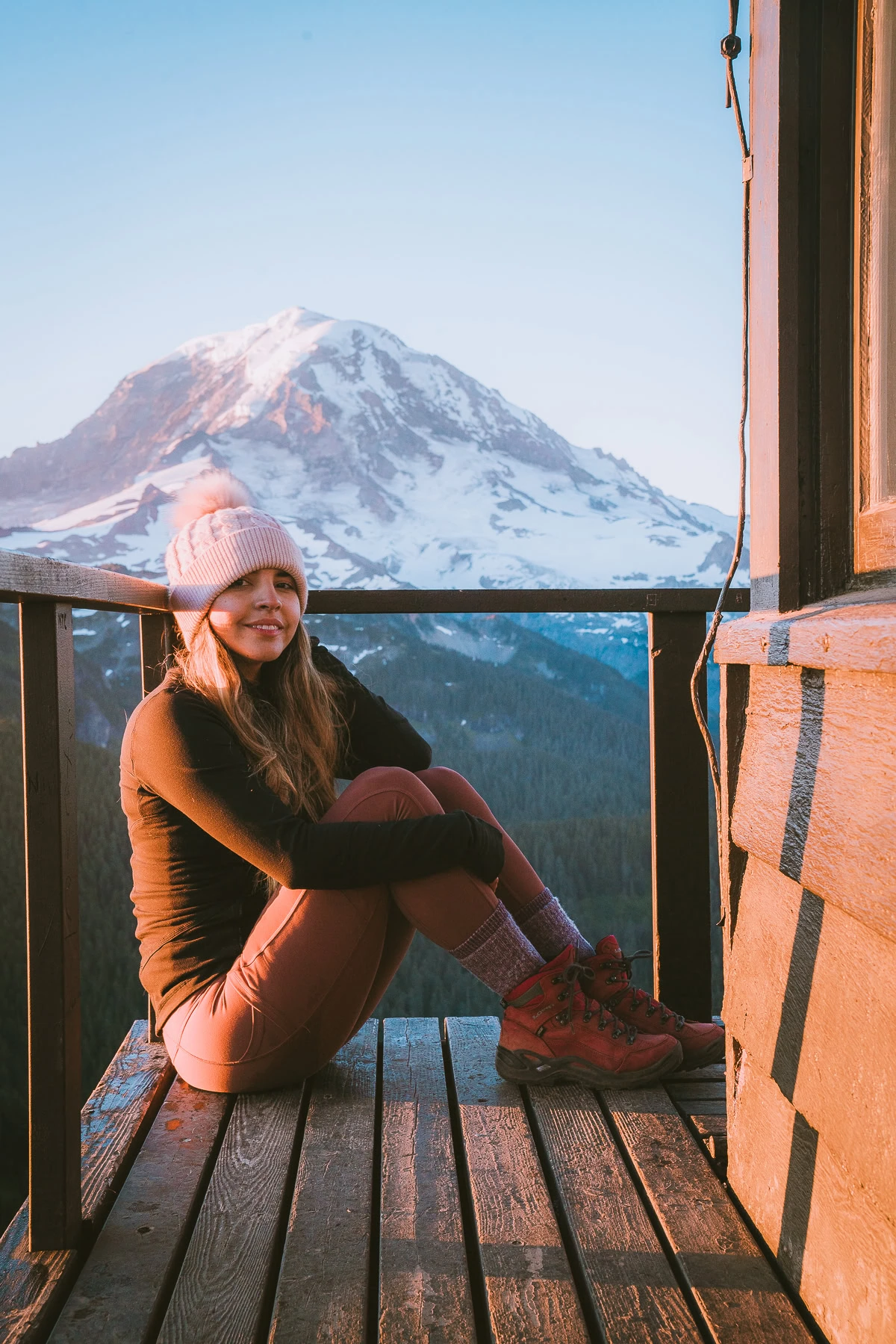
While there are four scenic fire lookouts within Mount Rainier National Park, there are two that stand out for their accessibility and magical views. Here’s a quick look at what you can enjoy at each of these fire lookouts:
- Tolmie Peak: Take on the 5.6-mile trek up to Tolmie Peak. You’ll find majestic views of Mowich Lake, which are perfectly framed by the alpine forest and mountain peaks in the distance.
- Mount Fremont: It’s a 5.7-mile hike up to Mount Fremont, where sunrise and sunset are just as spectacular as you might imagine. It’s also a great place to spot some wildflowers.
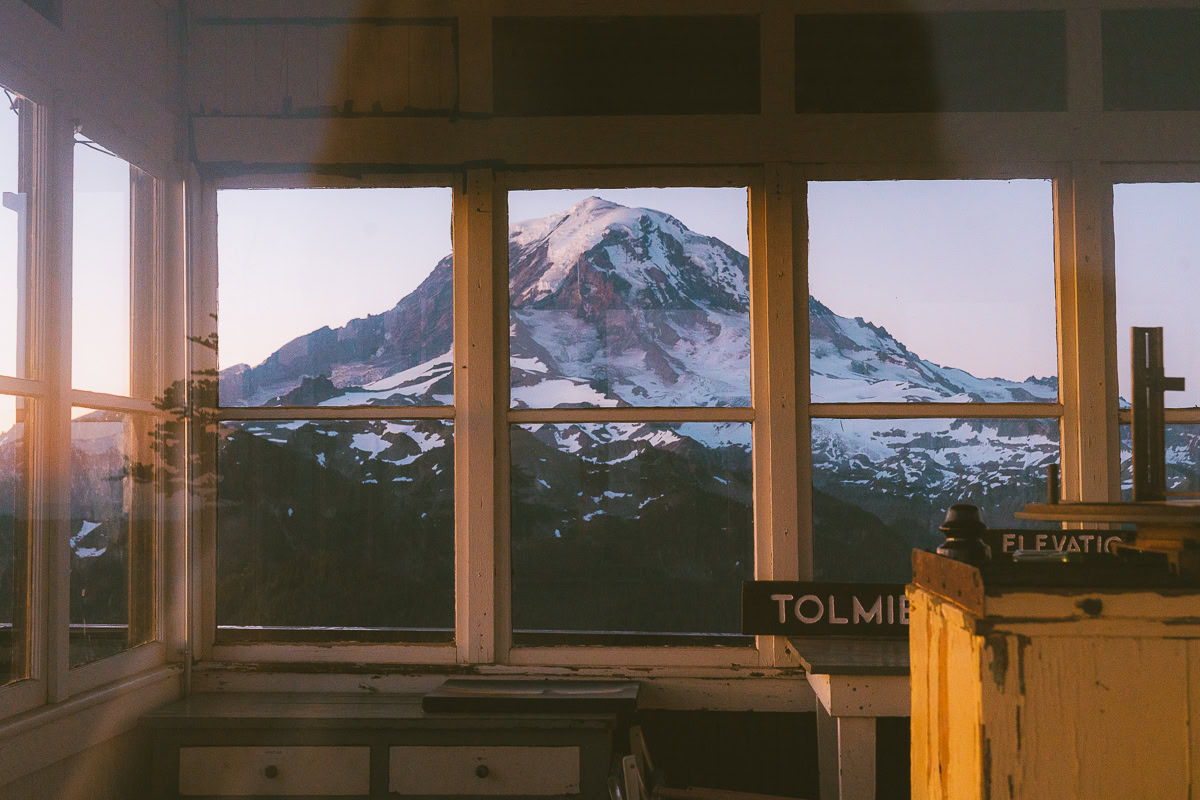
4. Hike Through the Grove of the Patriarchs
- Mileage: 1.1 miles (out-and-back)
- Elevation Gain: 49 feet
- Difficulty: Easy
- Trail Guide: Link
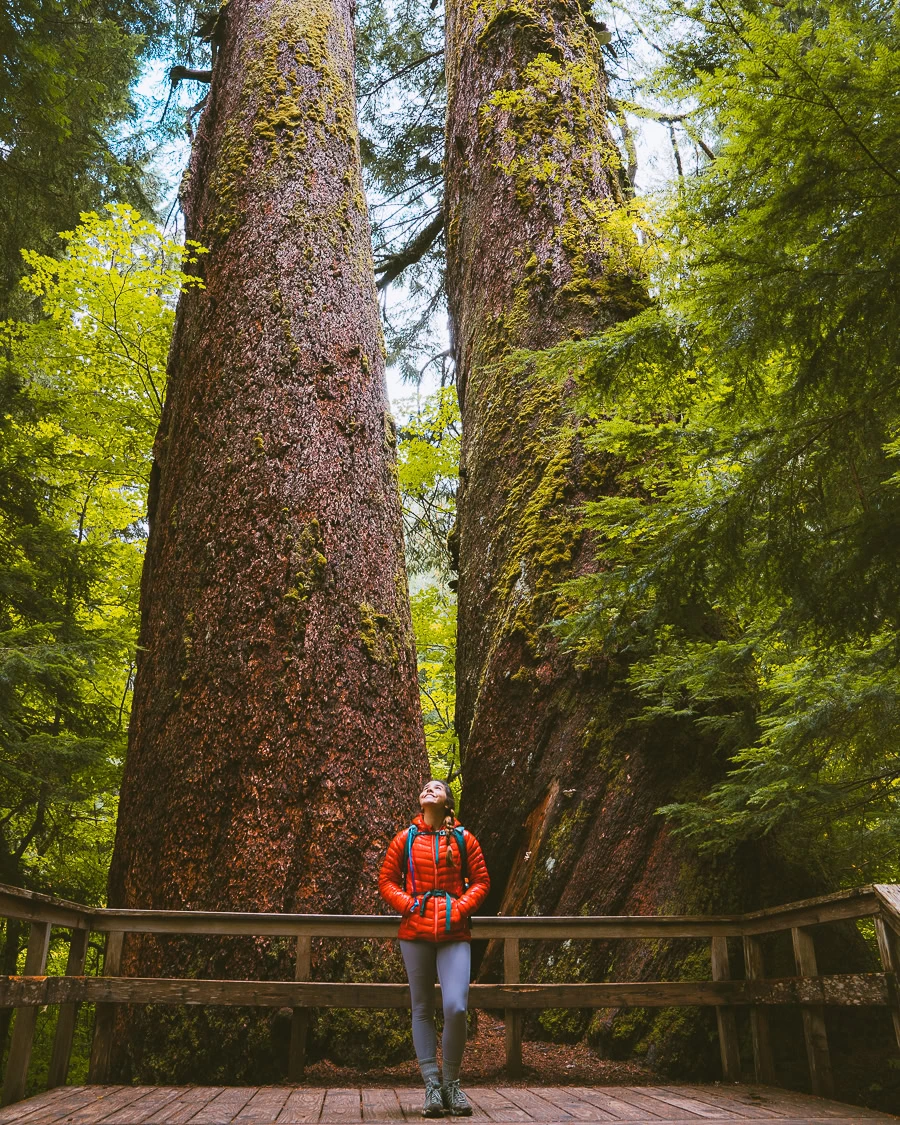
One of the easiest and best trails in Mount Rainier, the Grove of the Patriarchs, is like a step back in time. The path takes you through a forest of cedars, Douglas firs, and hemlocks, taking you all the way to Big Cedar.
Some of these trees are over 1,000 years old, so it really is like walking back in time. You’ll even cross the old suspension bridge of the Ohanapecosh River — which I found to be an extremely photo-worthy spot.

Note: The suspension bridge experienced severe damage due to flooding in 2021. As such, this trail is currently closed. For updates, visit the NPS website. If you want to see some of these large trees similar to the ones on this trail, consider hiking the Silver Falls Trail nearby.
5. Trek the Naches Peak Loop Trail
- Mileage: 3.5 miles (loop)
- Elevation Gain: 659 feet
- Difficulty: Moderate
- Trail Guide: Link
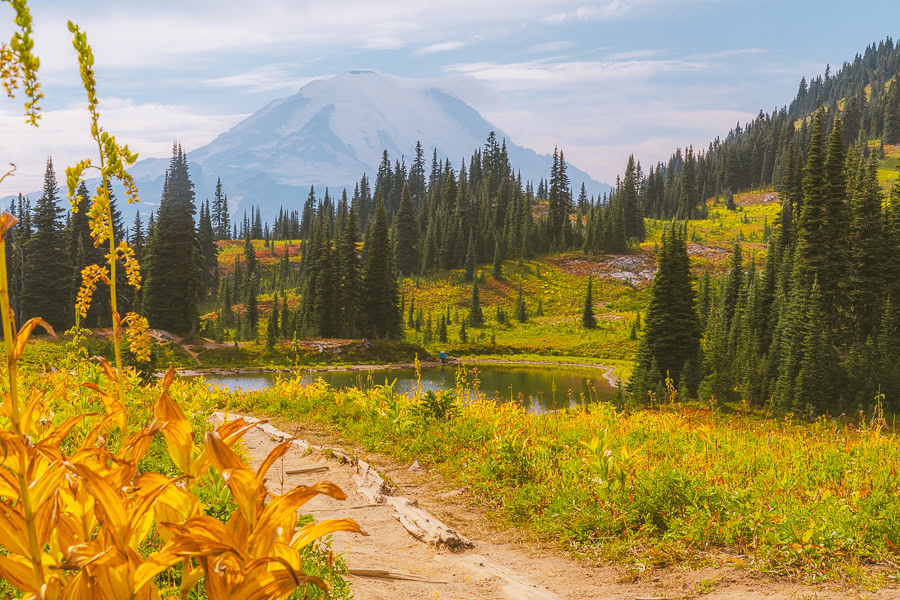
If you’re hoping to see the field of wildflowers and magnificent vistas of Mount Rainier, get ready to tackle this hour and 45-minute hike. Starting at Tipsoo Lake, I’d recommend going clockwise to enjoy the best views first and have a slightly more gradual incline.
This is also a fantastic part of the park where you can spot some wildlife, with plenty of Roosevelt elk and black bears frequenting the lakes alongside the trail.

Tip: You can extend this trail by visiting Dewey Lake for even more sweeping scenery, which will add another 3 miles to the trek.
Where to Stay Near Mount Rainier National Park
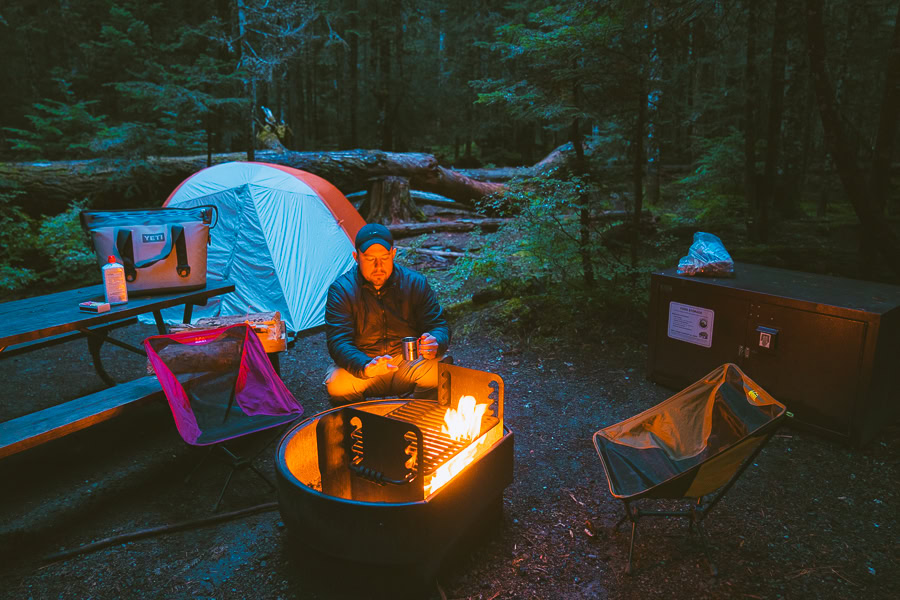
Knowing where to stay in Mt Rainier is another must for a stress-free trip to the park. As such, here’s a look at my favorite spots in and near the park for your convenience.
Budget | Mountain Meadows Inn & Chalet Suites
This budget-friendly accommodation is perfectly located just 6.8 miles from Mount Rainier’s Nisqually Entrance. From the garden views and hot tub to the finer details like a hairdryer and scrumptious complimentary breakfast, you ask for a better stay. >>>Check Availability
Mid-Range | Paradise Inn
If it’s the accessibility you seek, then Paradise Inn is the way to go. Located within the park, you’ll be a stone’s throw away from Myrtle Falls, the Jackson Visitor Center, and much more. You can also tuck into breakfast, lunch, and dinner at the onsite restaurant, making it a great all-round option. >>>Check Availability
Luxury | Nisqually Lodge
If you don’t mind splashing the cash, I highly recommend booking a room at Nisqually Lodge. This 5-star lodging has it all, from Eco-Botanics toiletries to deluxe bedrooms with forest views. They even have a ski school, and the Basecamp Bar & Grill is just down the road for a lovely lunch or dinner. >>>Check Availability
Camping | Cougar Rock Campground
While there are four campgrounds in Mount Rainier, Cougar Rock is the best of the bunch. Located in the southwest section of the park, it’s close to Paradise and its lovely attractions. With fire grates, flush toilets, and water available, you’ll truly be able to enjoy your non-electric camping experience here. >>>Check Availability
Tips for Visiting Mount Rainier National Park
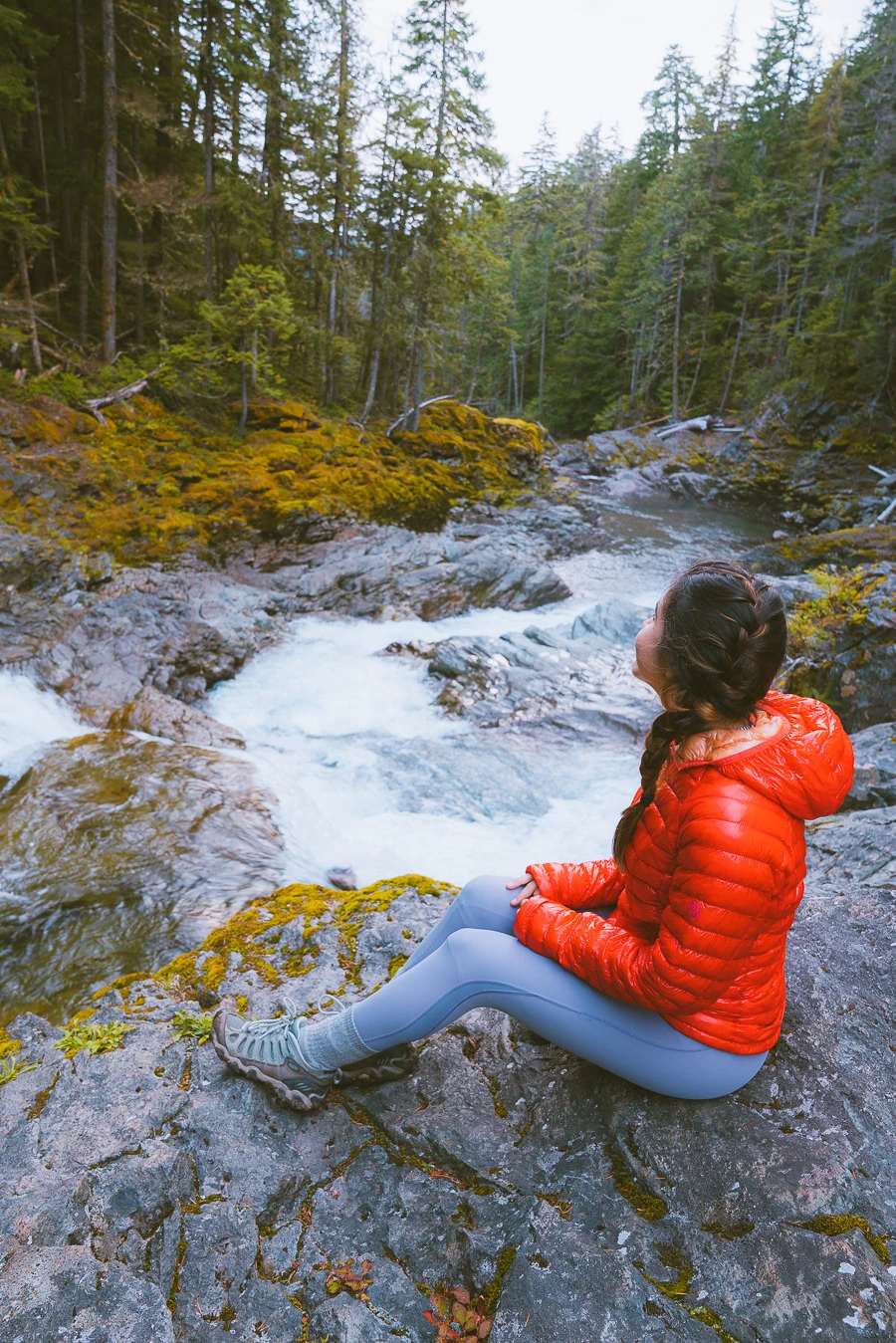
- There are road closures in winter due to the extreme conditions, which you’ll need to keep track of on the NPS website.
- Avoid visiting on weekends if you can, as it’s a super popular weekend destination for Seattle locals.
- Something that many people pass up is watching the free short film at Jackson Visitor Center. It’s a short 15-minute movie, and I highly recommend checking it out.
- Start early and end late. The sunrises and sunsets in the park make the long days worthwhile.
- Try and plan your visit according to the weather. The volcano really is spectacular, so you’ll want to go on days when there are clear skies.
Claim your FREE Hiking Checklist
Ready to start hiking? Grab my free hiking checklist and never forget anything at home!
FAQs About Mount Rainier National Park
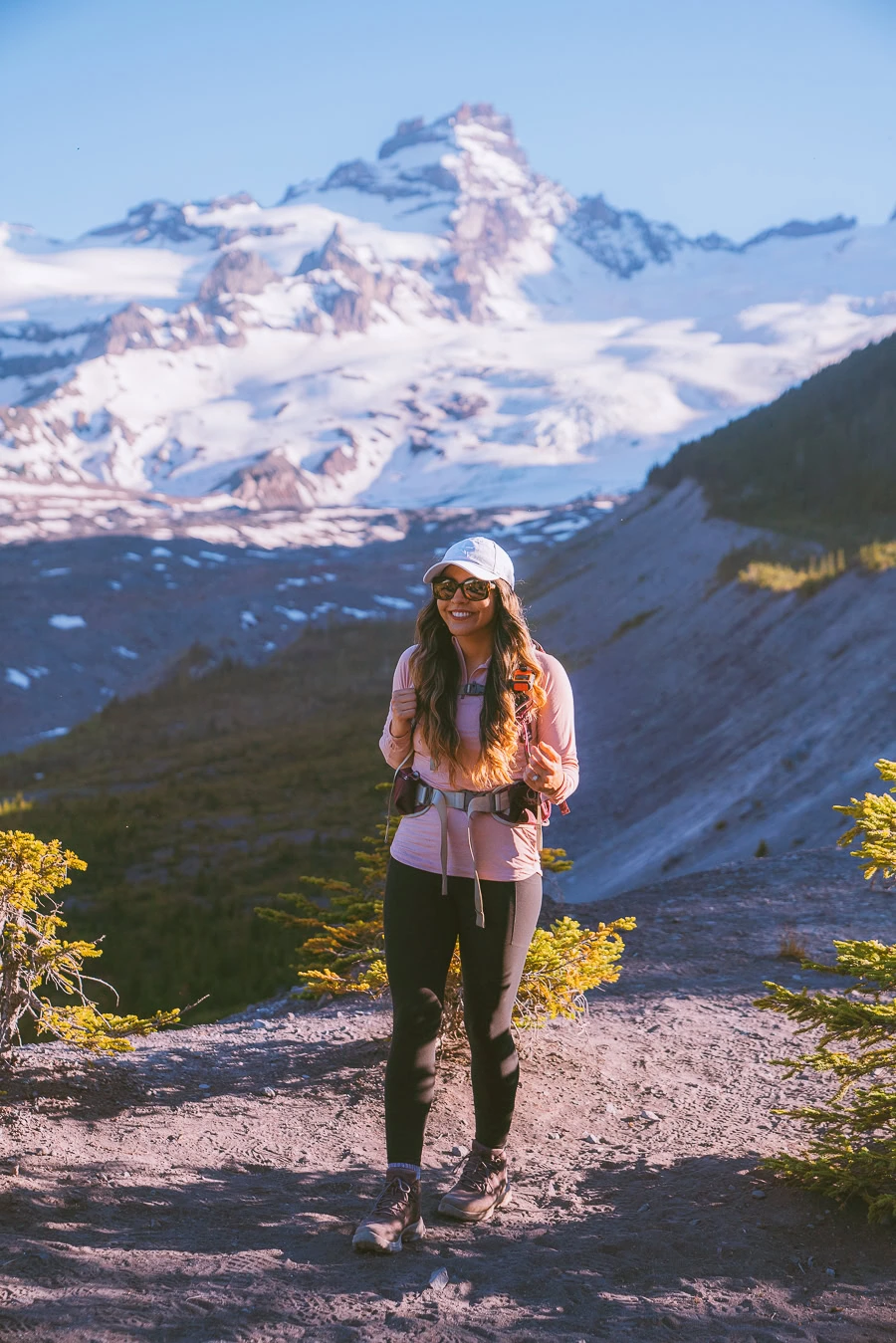
Before heading north to North Cascades for a look at our next national park, here are some quick answers you need to keep in mind.
Is It Free to Visit Mount Rainier?
Like Olympic National Park, Mt Rainier’s Standard Pass costs $15 per person, $30 per vehicle, and $55 for an Annual Pass. Timed entry reservations are also required in summer for Paradise’s Nisqually Entrance and Sunrise’s Stevens Canyon Entrance at $2 per reservation.
How Long Is a Mount Rainier Gondola Ride?
The scenic gondola ride isn’t actually in Mount Rainier National Park but at the nearby Crystal Mountain Resort. The gondola ride lasts around 12 minutes.
Can You Walk to the Top of Mount Rainier?
Yes, you can, as there are over twenty climbing routes and ski paths via four main trails. That said, hiking Mt Rainier is no joke, so I would recommend joining a mountaineering team for your safety and peace of mind.

Tip: Grab a copy of my Washington ebook for a comprehensive guide to Mount Rainier that’ll never leave your side.
North Cascades National Park
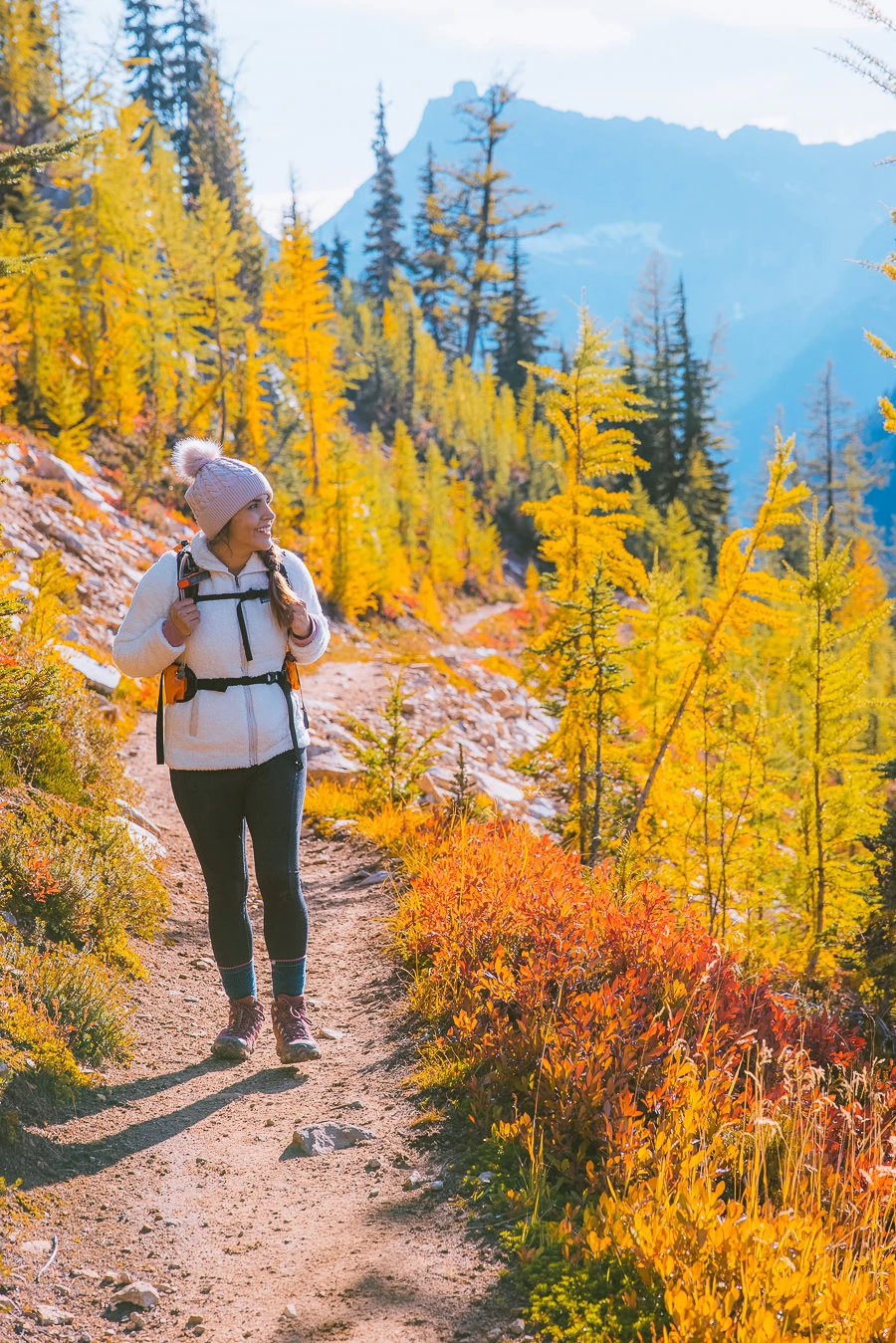
With over half a million acres of rugged mountain ranges and idyllic glacier-fed lakes, North Cascades National Park is a destination worth its weight in gold. So, let’s dive into the ins and outs of this historic park.
The Best Time to Visit North Cascades National Park
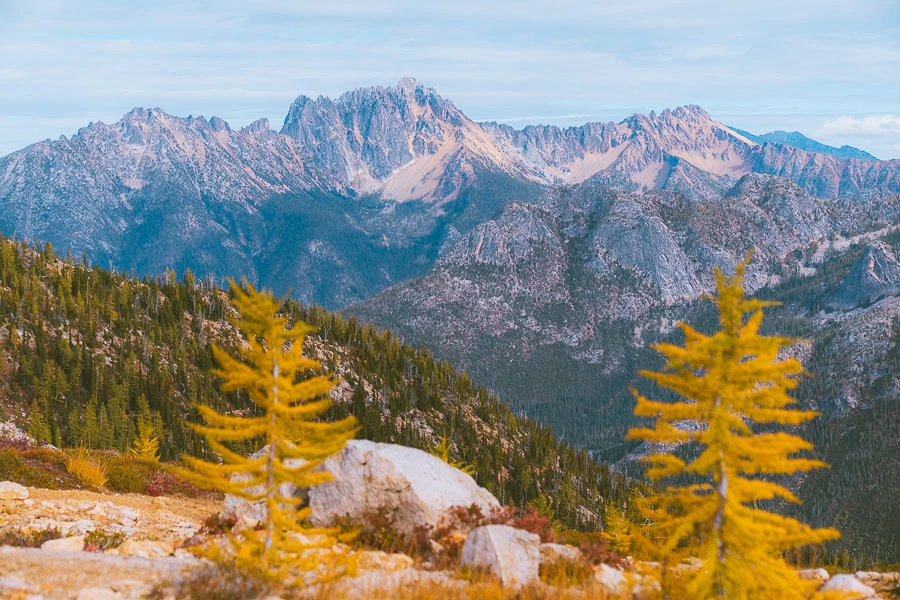
As with the other national parks near Seattle, it’s best to visit North Cascades in summer between June and September. While this is my go-to season, here’s a look at the other seasons so you can make a conscious decision:
- Summer: Verdant alpine meadows, wildflowers, and glacier-fed lakes are in full force come summer. Temperatures average at around 60°F and 80°F, which is perfect for hiking.
- Spring: As the snow melts, spring brings about a diverse array of wildflowers in the North Cascades. Still expect cool conditions and limited access to trails, with temperatures averaging between 40°F and 60°F.
- Fall: With similar temperatures to spring, the fall is the second best time to visit, with many trails still open and fewer crowds.
- Winter: The main road (Route 20) is closed in winter, so access to the park is limited. That said, the high snowfall makes it a great destination for cross-country skiing and snowshoeing.
How Many Days Do You Need to Spend at North Cascades National Park
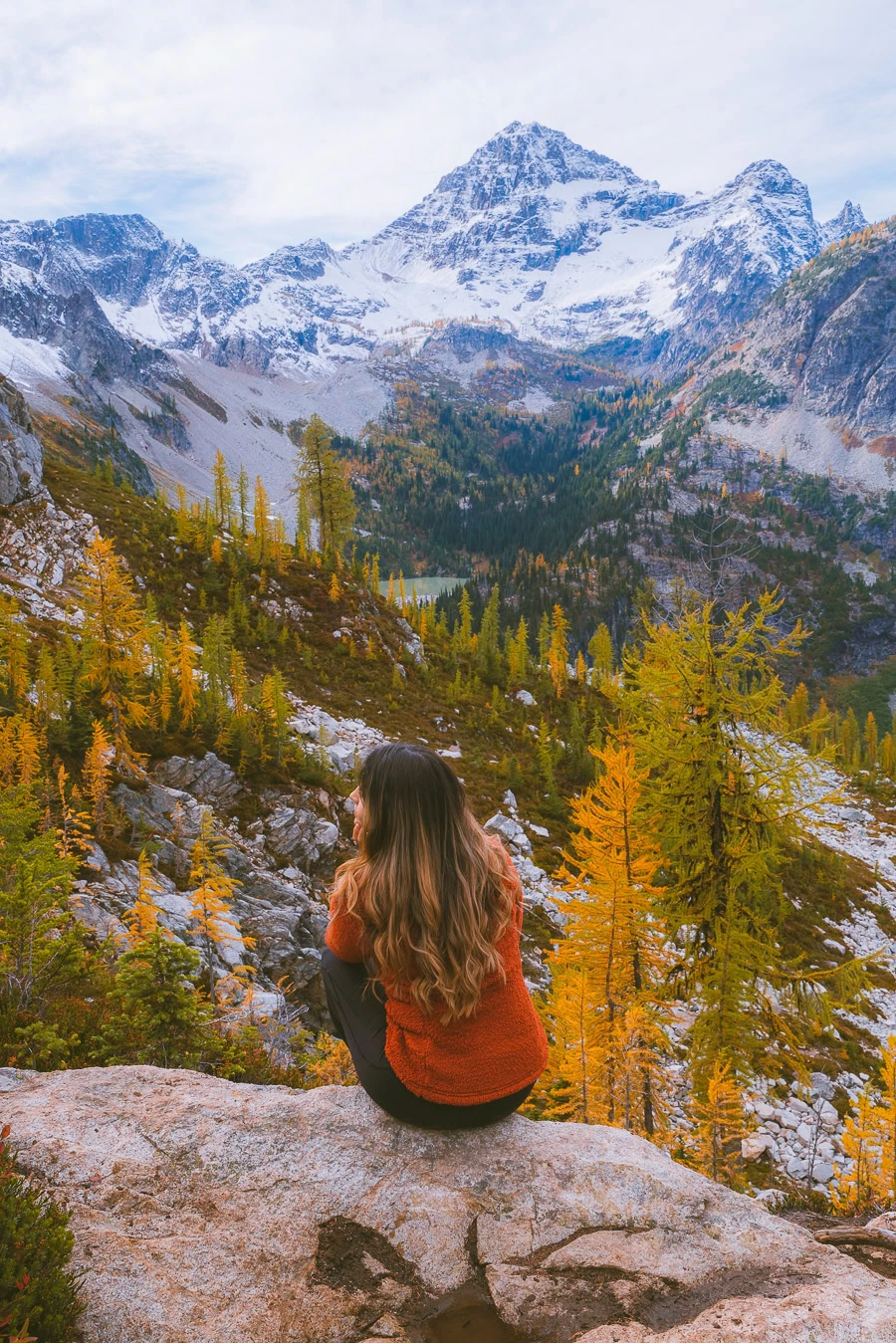
I’d recommend spending at least two days in this picturesque part of Washington. Ideally, though, aim for a three-day North Cascades itinerary so you can explore the park without being rushed.
The Ultimate 3-Day North Cascades Itinerary in a Nutshell
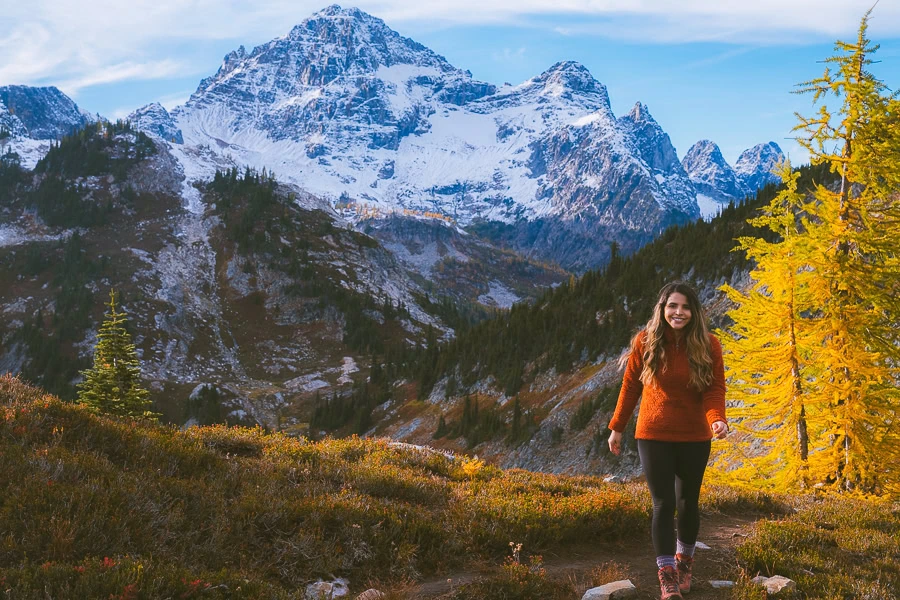
Here’s a quick breakdown of what you can expect to do during a long weekend at North Cascades National Park:
Day One
- Take a scenic North Cascades Highway drive
- Hike to Hidden Lake Lookout
- Wander along the Trail of the Cedars
- Kayak along Ross Lake
- Soak up the sunset at the Diablo Lake Lookout
Day Two
- Have a morning walk to Ladder Creek Falls
- Trek the Thunder Knob Trail
- Visit Ross Lake Overlook
- Tackle the Maple Pass Loop
- Stargaze at Rainy Pass
Day Three
- Explore Newhalem
- Try out whitewater rafting
- Hike the Blue Lake Trail
- See the sunset at Washington Pass Overlook
How to Get to North Cascades National Park
The fastest way to get to North Cascades from Seattle is via the West Entrance. The entrance is roughly two hours from Seattle — and 3 hours and 45 minutes from Longmire at Mount Rainier.
To get there, you’ll drive along the I-5 before turning right on tWA-530. From there, you’ll continue on until you reach the North Cascades Highway (Route 20), which will take you all the way to the park’s West Entrance. From the park entrance, it’s a further 30 minutes of driving before you reach Diablo Lake.

Tip: During your drive to North Cascades, consider taking a short detour to Deception Pass State Park. It’s also along Route 20 and offers a great opportunity to snap some memorable photos at Deception Pass Bridge.
The Different Sections of North Cascades National Park
The park is predominantly split into two key regions, the northern and southern districts. The divide is made by the North Cascades Highway, which runs from east to west through the park. As such, here’s a quick look at what each district has to offer:
- Northern District: This region is best known for its turquoise glacier-fed lakes. You’ll find Ross Lake and Diablo Lake, as well as some iconic hiking trails, like Thunder Knob and the last fire lookout in the park at Desolation Peak.
- Southern District: The southern region is better known for its epic hiking routes. This includes the Hidden Lake Lookout, Maple Pass Loop, and stunning walks at Newhalem.
What to Do at North Cascades National Park
Whether looking to hike or just enjoy some sightseeing, here are activities in North Cascades that I’d do over and over again.
1. North Cascades Highway Drive
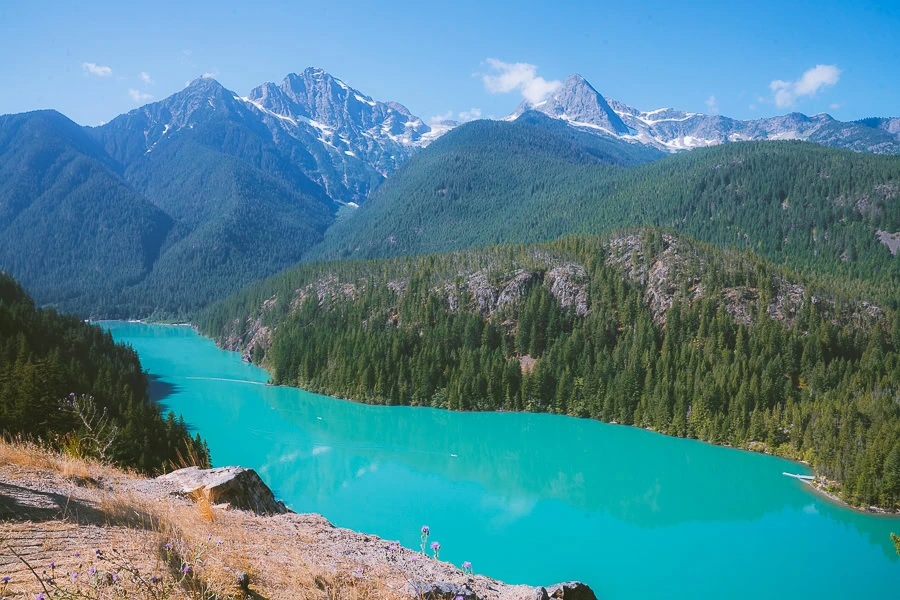
North Cascades Highway offers around 40 miles of undisturbed scenery, with alpine forests and crystal-like lakes taking center stage. Here’s a glimpse at the stops you should make when driving from Newhalem to the parks East Entrance:
- Gorge Creek Falls
- Diablo Lake Vista Point
- Happy Creek Forest Walk
- Ross Lake Overlook
- Rainy Pass
- Washington Pass Vista Point

Note: It will take you around an hour to complete the drive, but that excludes the time taken at each stop.
2. Hike to Hidden Lake Lookout
- Mileage: 8.8 miles (out-and-back)
- Elevation Gain: 3,746 feet
- Difficulty: Hard
- Trail Guide: Link
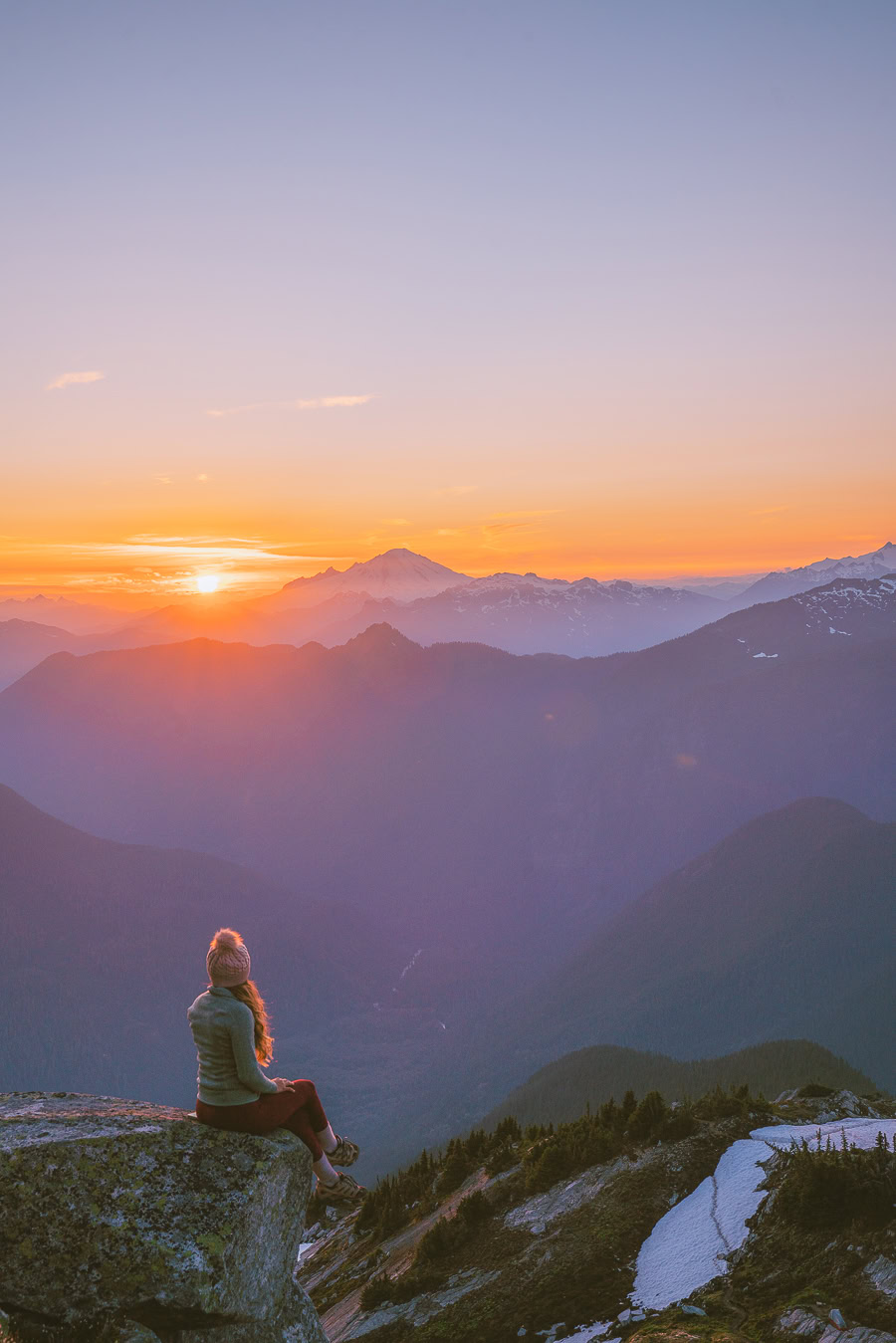
As far as North Cascades hikes go, you don’t get much better than this strenuous trek offering undeniably breathtaking overlooks. You’ll wander through wildflower meadows, scramble up rocky outcrops, and spot a few waterfalls before reaching a ranger cabin.
From the cabin, you’ll have unrivaled views of what is a very hidden lake, as the name suggests, with Buckner Mountain in the distance. It’s a very popular trek as well — despite the difficulty — so aim to get to the trailhead early in the morning if possible.

Note: You’ll need a high-clearance vehicle to get to the trailhead safely — which I fortunately have, so I was able to do this hike.
3. Kayak or Paddle Along Ross Lake
Trust me when I say there’s no better place to wade through the icy turquoise waters of the North Cascades than Ross Lake. From mirror-like views of the surrounding mountains to the calming feeling of being in nature, you can’t go wrong with this activity.
A few spots worth paddling past include Ruby Arm, Cougar Island, and Ross Dam. Also, don’t forget to admire Crater Mountain to the east and Sourdough Mountain to the west.

Tip: You can rent a kayak or motor boat from Ross Lake Resort.
4. Hike the Thunder Knob Trail
- Mileage: 3.4 miles (out-and-back)
- Elevation Gain: 675 feet
- Difficulty: Moderate
- Trail Guide: Link
The Thunder Knob trail is an hour and 40-minute trek that I’ll look to do each time I visit North Cascades. It’s a stunning trek along a wide ridge between the North Cascades Highway and Ruby Arm.
You’ll also be able to soak up the eclectic vistas of Ruby and Sourdough Mountain in the distance before reaching the pièce de résistance at the Hidden Cove. Here, you’ll find panoramic views of Diablo Lake that are second to none.
5. Hike the Trail of the Cedars
- Mileage: 0.6 miles (out-and-back)
- Elevation Gain: 26 feet
- Difficulty: Easy
- Trail Guide: Link
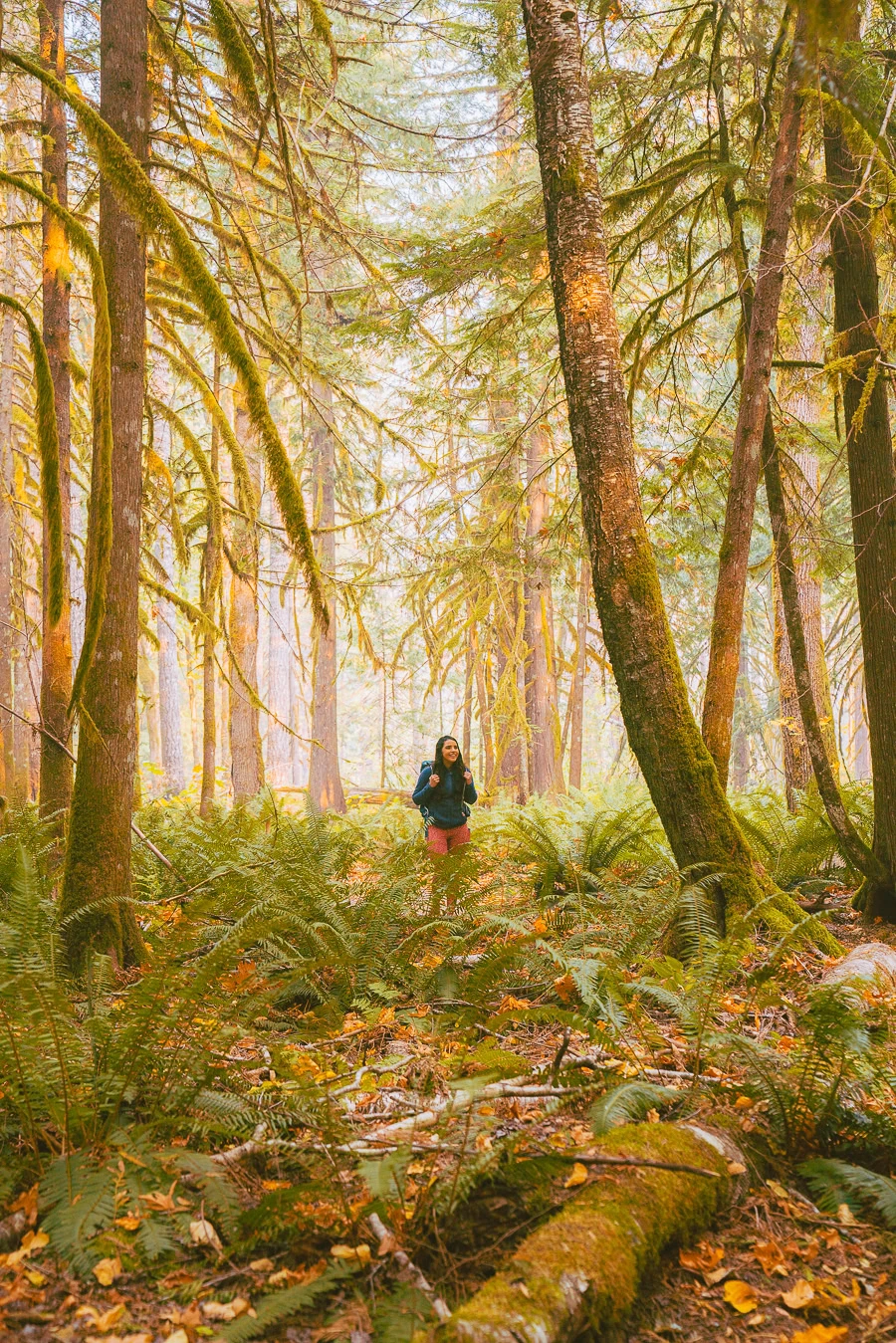
While this is an easy Washington hike that few would think is worth mentioning, I can’t stress enough how lovely this part of the park is. You’ll trek across the Skagit River — which is an epic photo spot — before wandering through the wonderful world of Western Red Cedars.
It’s also a wheelchair-accessible trail, so everyone can enjoy this route. During the walk, keep an eye out for the Red Cedar, known as the See-Through Tree. As the name suggests, there’s a hole in the growing tree, allowing you to see all the way through it.
Where to Stay Near North Cascades National Park
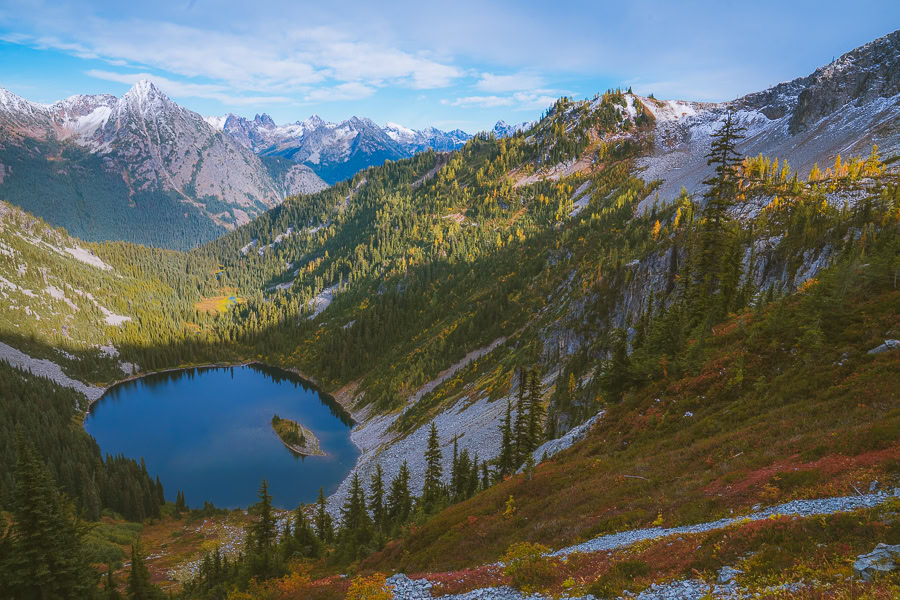
With only one place to stay in North Cascades, knowing where to settle near the park is essential. So here are my top picks for every budget:
Budget | Mt Baker Hotel
With the North Cascades Western Entrance being just 4.3 miles away, this is a great budget-friendly stay. It may feel like you’re stepping back into the 1970s with the decor, but you’ll find all the usual amenities of a hotel, and it’s close to local restaurants like the Lone Star Steakhouse. >>>Check Availability
Mid-Range | Ross Lake Resort
As one of the only lodgings in the park, the Ross Lake Resort is a great option for easy access to the entire park. While slightly pricey, you’ll have access to a private cabin, toilets, and scenic views of Ross Lake. What more could you ask for? >>>Check Availability
Luxury | Riverside Retreat on Skagit River
If you don’t mind spending a bit more for a private cabin, then this riverside retreat with a hot tub should be at the top of the list. The three-bedroom house has a games room and can cater to six guests, making it the ideal place for a family trip or group getaway. >>>Check Availability
Camping | Newhalem Creek Campground
While there are a couple of campgrounds in the park, the Newhalem Creek Campground is the best-equipped option you’ll find. While they only offer non-electric sites, you’ll find picnic tables, flush toilets, campfire rings, interpretive trails, and much more. >>>Check Availability
Tips for Visiting North Cascades National Park
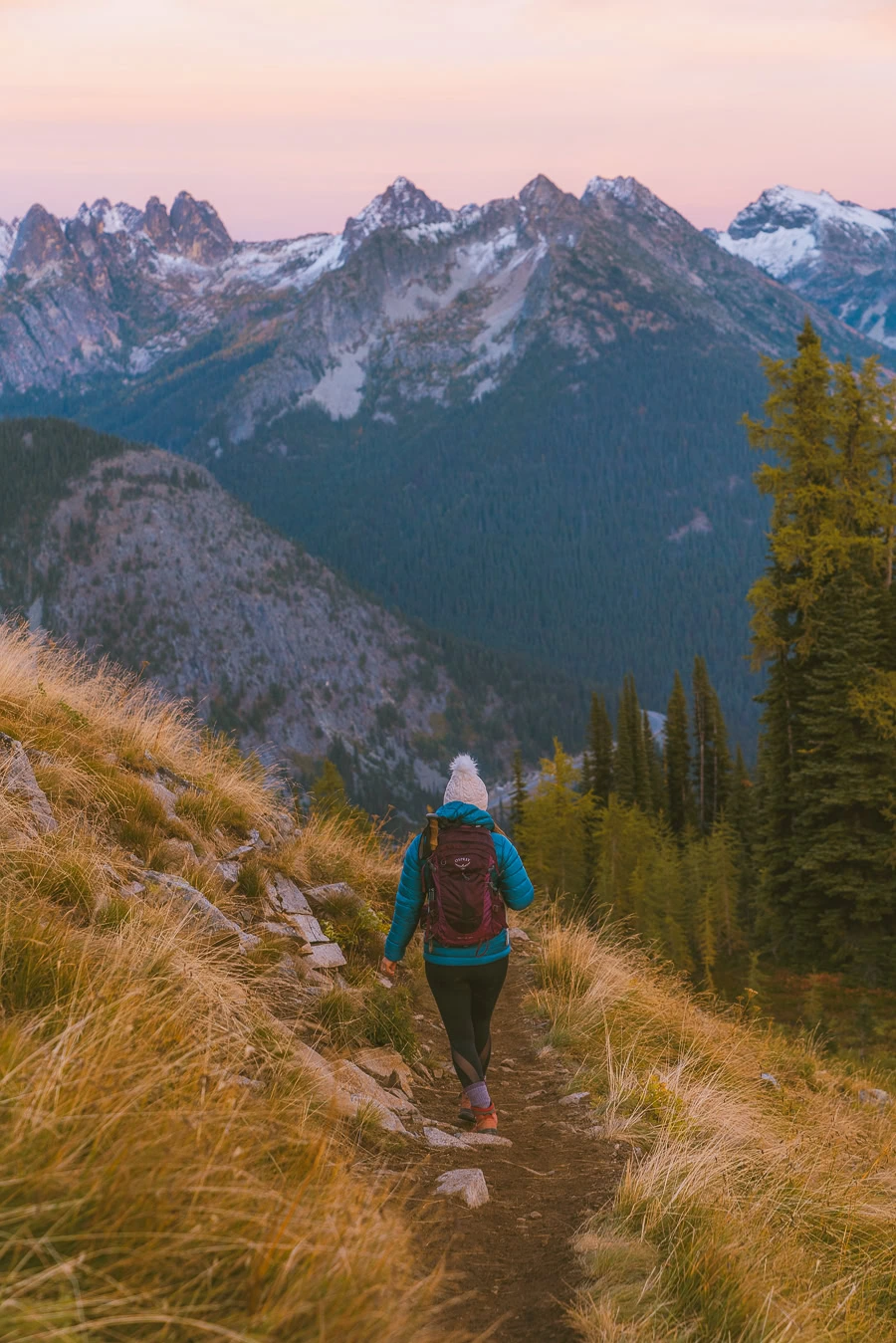
- In order to explore the park in its entirety, you’ll need your own car.
- Aim to visit Ross Lake and Diablo Lake View Points at sunset for the best photo opportunities.
- Stick to paths, and practice the leave no trace principles.
- Aim to start hikes in North Cascades early in the morning, as the trails tend to get very busy by 9 am in summer.
- The park is prone to avalanches. If visiting in winter, please keep track of the avalanche forecast here.
Join my Newsletter to receive my free Backpacking Checklist!
Subscribe to have posts delivered straight to your inbox!! PLUS, get my FREE backpacking checklist!
FAQs About North Cascades National Park
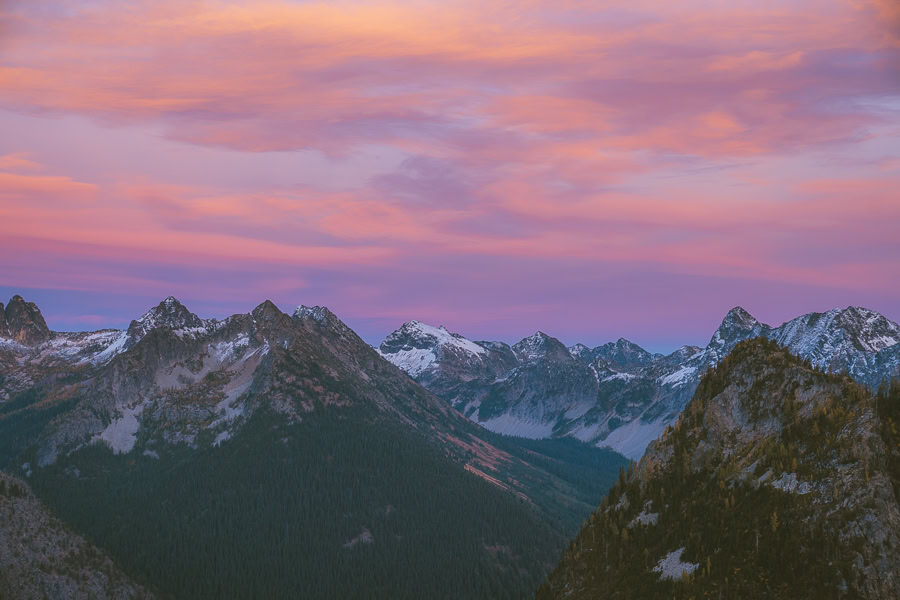
Before sending you on your way, here are some essential answers to the most asked questions about the North Cascades.
What Is the Closest Town to North Cascades National Park?
Marblemount is the closest town to North Cascades West Entrance, with a mere 6.5 miles separating the two. That said, Marblemount doesn’t have a lot of lodging options. As such, I’d recommend looking at Concrete for a wider range of hotels.
Are There Bears in North Cascades National Park?
There are currently black bears in the park. While the last sighting of a grizzly bear in the park was in 1996, the NPS and US Fish and Wildlife Service recently announced they will be restoring grizzlies to the region. Please remember your bear spray when visiting any of Washington’s national parks.
Do You Need a Park Pass to Enter North Cascades National Park?
Fortunately, you don’t need a pass to visit the North Cascades. That said, you will need a Northwest Forest Pass to access the USFS trails, which you can purchase here.
What To Pack When Hiking Washington
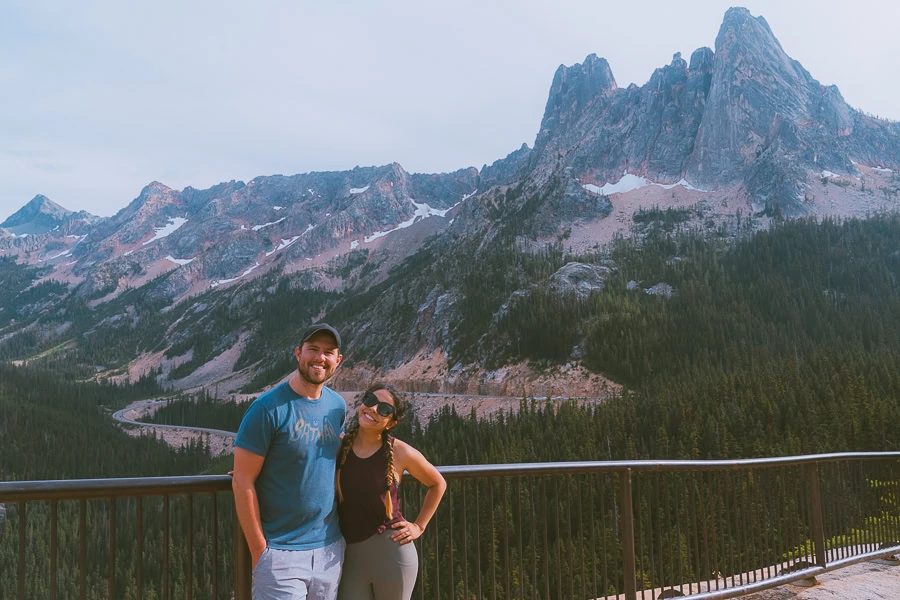
- Sunscreen: Super important and it is part of the ten essentials! >Buy Sunscreen
- Chapstick: This one has SPF so your lips won’t get burned! >Check Out This Chapstick
- Hiking Boots/Shoes: If you use tennis shoes, you can easily hurt your toes hitting a rock by accident (Trust me, I have done it so many times before). >Check Out My Hiking Shoes
- Hiking socks: Having the correct socks helps you prevent getting blisters. Smart Wool is probably my favorite brand out there. >Buy Hiking Socks
- Water Reservoir: Water reservoirs help prevent me from getting dehydrated while hiking. The great thing about this reservoir is that it doesn’t have the plastic taste. >Here Is My Water Reservoir
- Water: Stay nice and hydrated.
- Sunglasses: It can get sunny even in the fall, so make sure to pack some sunglasses. >Check Out These Sunglasses
- Snacks: The best snacks are jerky, nuts, and energy bars. Clif Bars are great for hiking
- Camera: The Sony A6000 was one of the first cameras I started traveling with. The Sony A6000 is an excellent camera for people that want to start improving at travel photography. >Buy Sony Camera Here
- First Aid Kit: This is one of the first things I bought when I first started going on adventures. It is super portable. >Buy This Awesome First Aid Kit Here
- Day Pack to carry all your things: To carry all your gear, water, and food, you need a good backpack. Osprey is known to have some of the best backpacks in the market. >Buy This Great Quality Backpack
- Headlamp: A headlamp is an absolute must in case you get stranded in the dark! It is a lot more portable and easier to use than a flashlight. >Buy A Headlamp Now
- Leggings or Hiking Pants: I always wear leggings while hiking because it is what I feel most comfortable with! >Click For My Favorite Hiking Leggings
- Breathable sweat-wicking shirts: Cotton shirts soak up your sweat when hiking, so make sure to wear something breathable. >Check out this awesome breathable shirt here.
- Mid Base Layer: If you are hiking in the winter, this might be a great idea. >Check Out My Sweater Here
- Sports Bra: For women. >Check This One Here
- Jacket: I always have a jacket in my backpack, even if it is hot. I do it just in case of an emergency. >Buy My Favorite Jacket
- Rain Jacket: The worst feeling in the world is being wet and cold while hiking. You can get hypothermia, so always carry a poncho or a rain jacket when you hike Washington. >Check Out My Rain Jacket Here
- Tripod: This is an optional item, but it is excellent for getting the ideal sunset pictures. >Check out this tripod
- Knife: I always carry a knife in my backpack just in case. >Check Out My Knife Here
Claim your FREE Hiking Checklist
Ready to start hiking? Grab my free hiking checklist and never forget anything at home!
Final Thoughts on the Three National Parks in WA
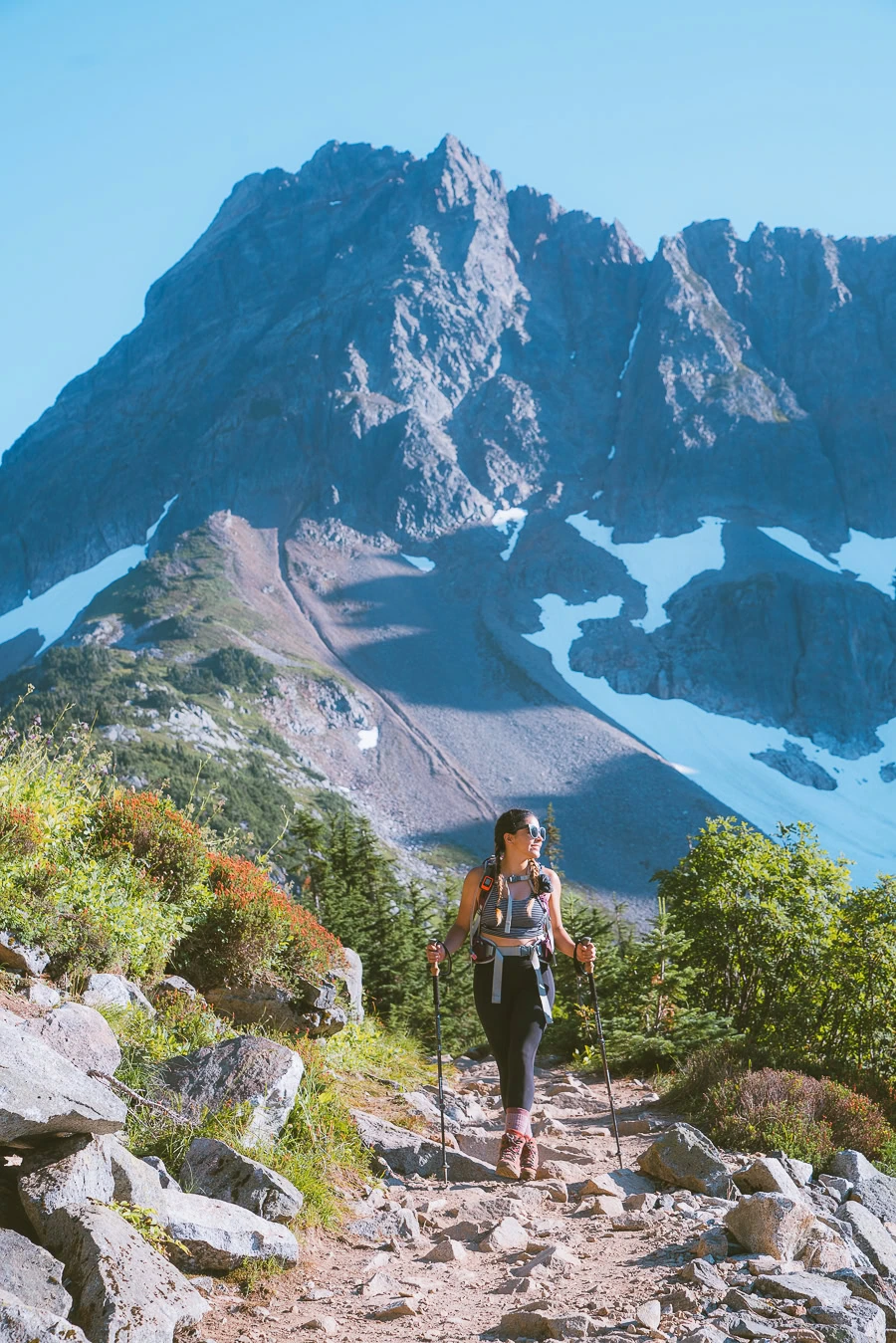
As you can tell, there are a lot of reasons to visit each of the national parks in Washington State. Which park you visit really depends on your preferences. That said, as a proud Seattleite, I’d say all three national parks deserve a visit.
If you’re short on time, Mount Rainier National Park is the best for a day visit. If you want to admire the dramatic Pacific Northwest coastline, Olympic National Park should be your go-to. And if you simply want to escape the city and visit a scenic oasis, North Cascades National Park is worth its weight in gold.
Until next time, happy hiking!
Tip: If you enjoyed this post, consider grabbing a copy of my Washington ebook, so you have all the answers you need at your fingertips.

